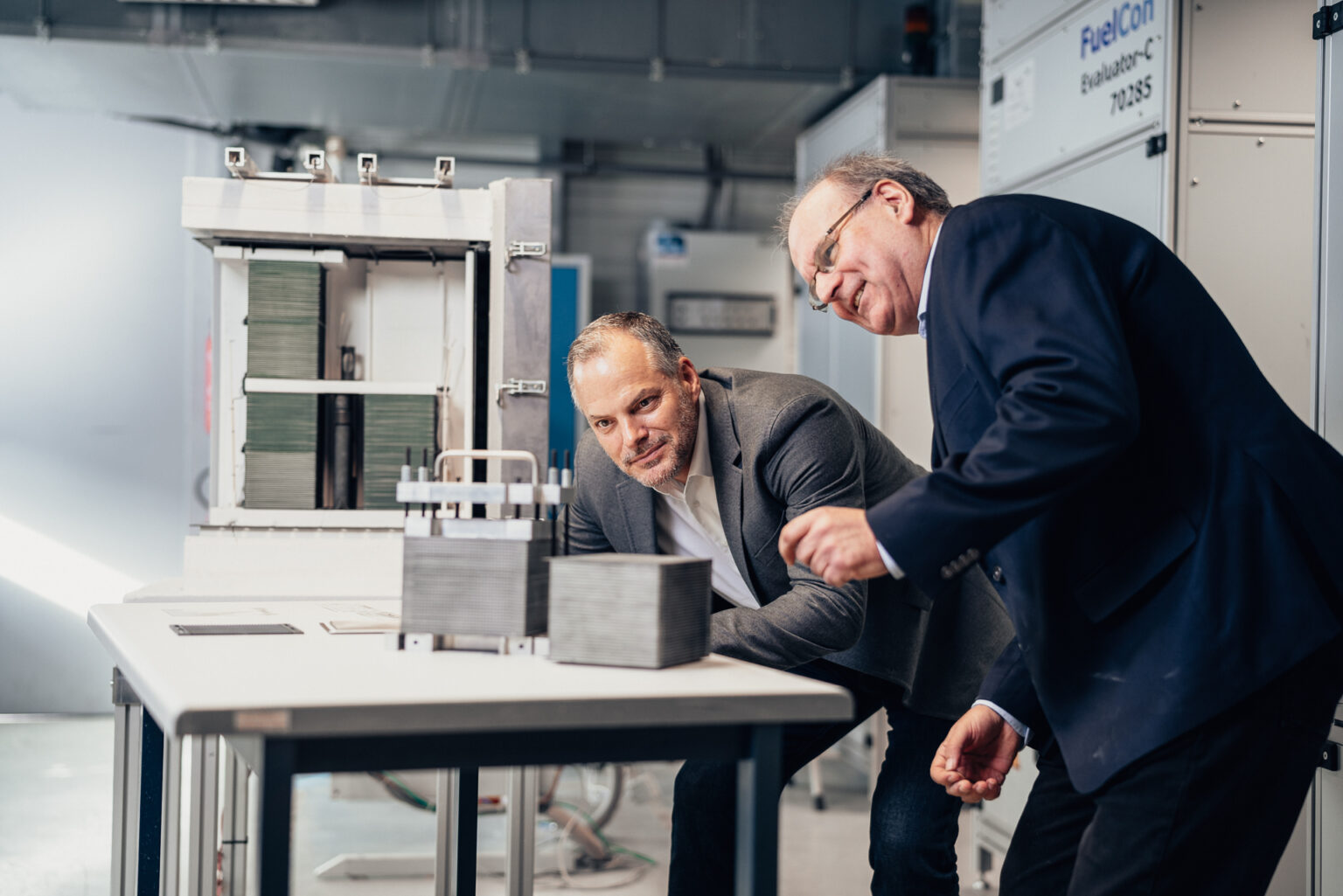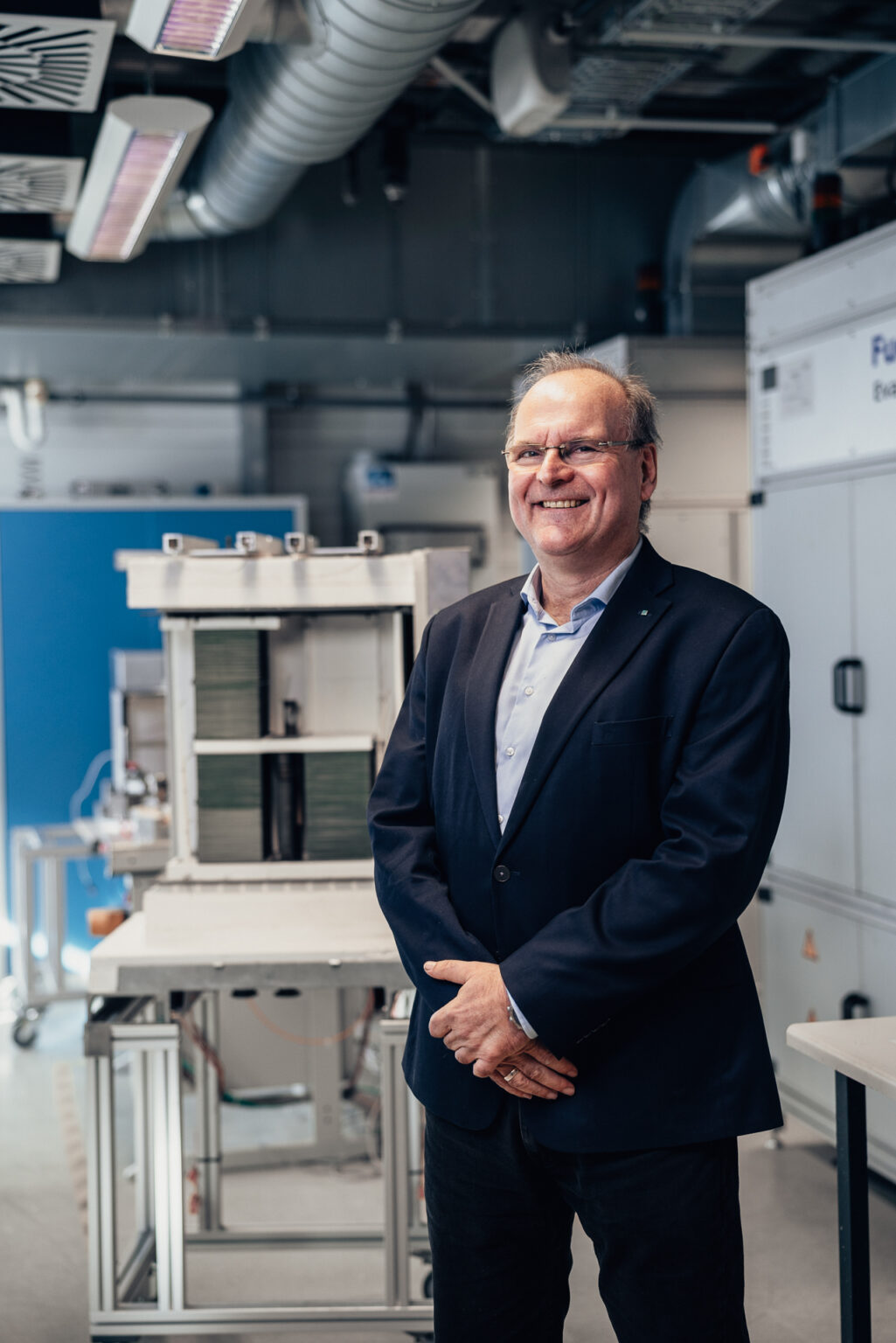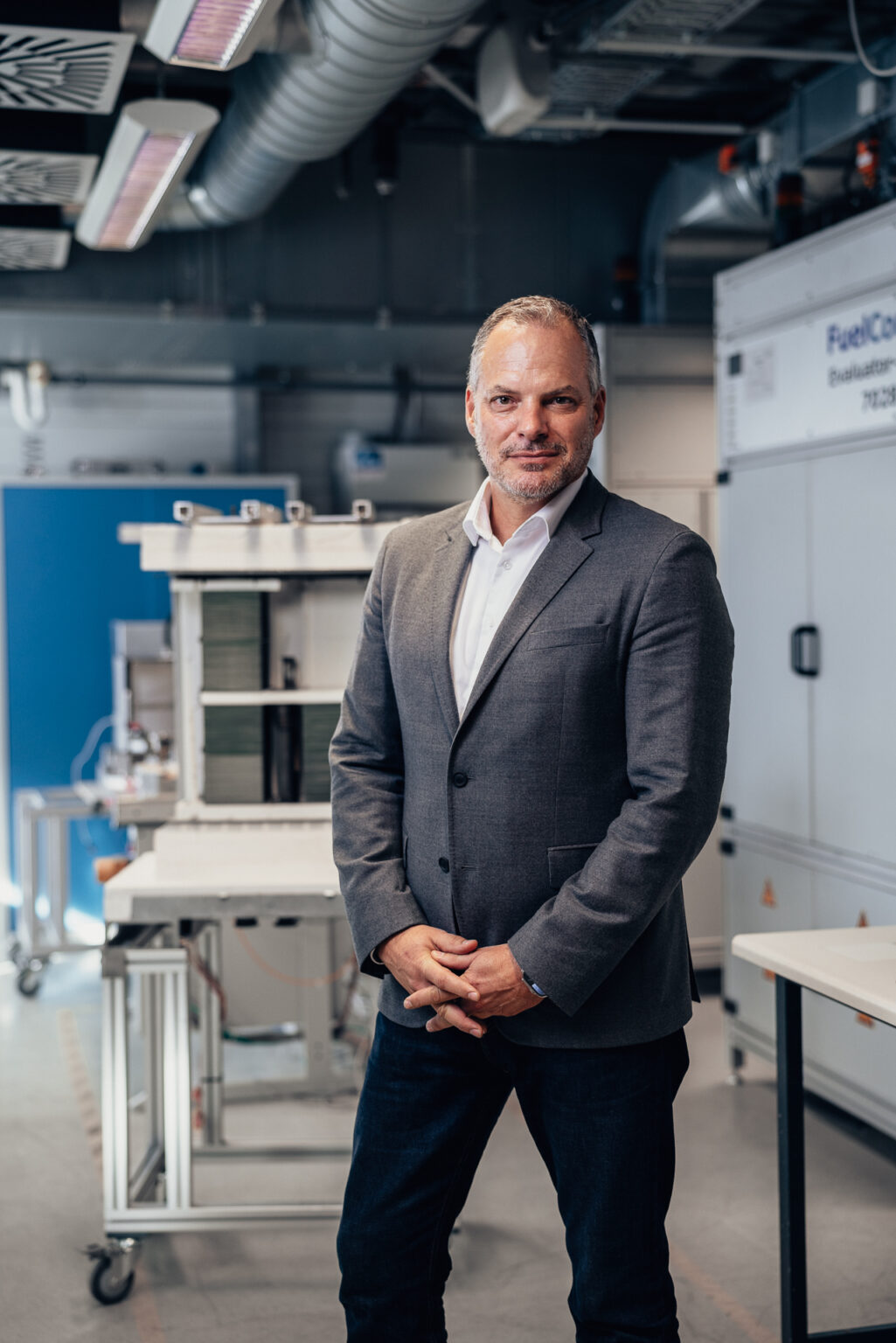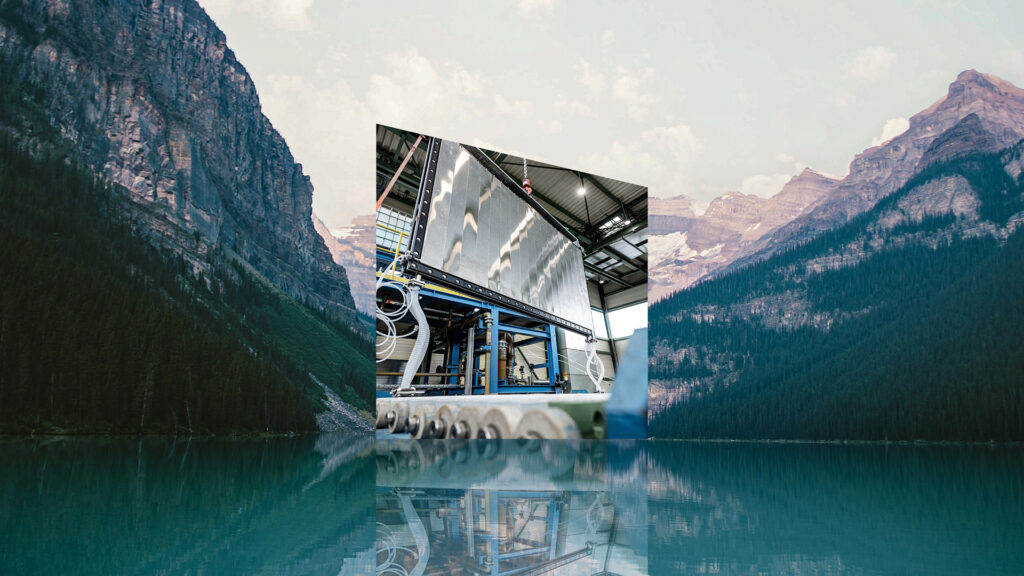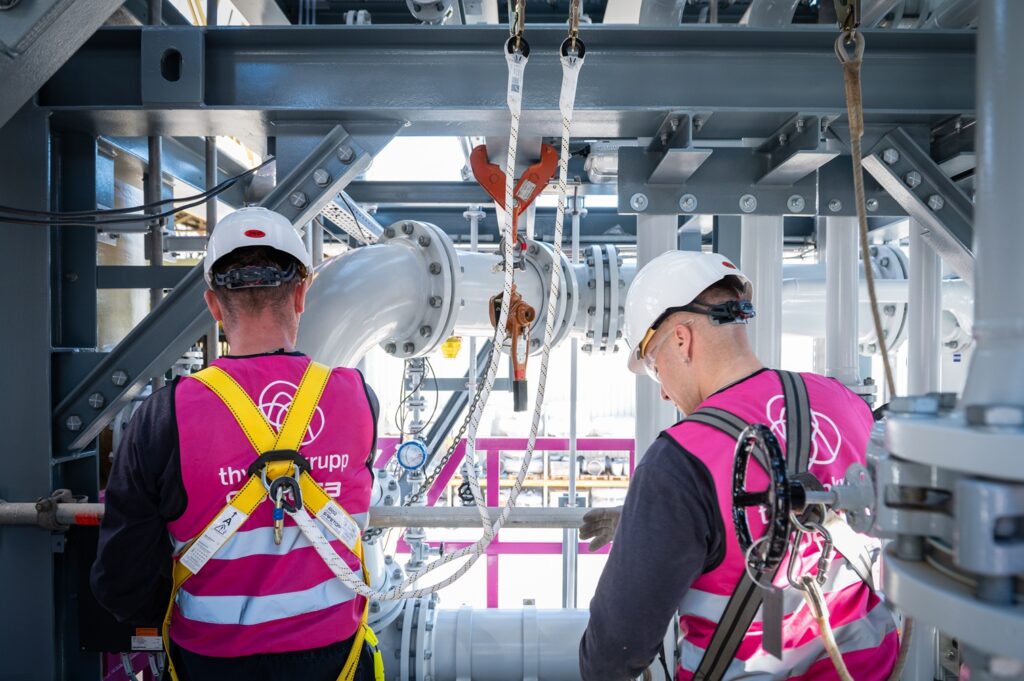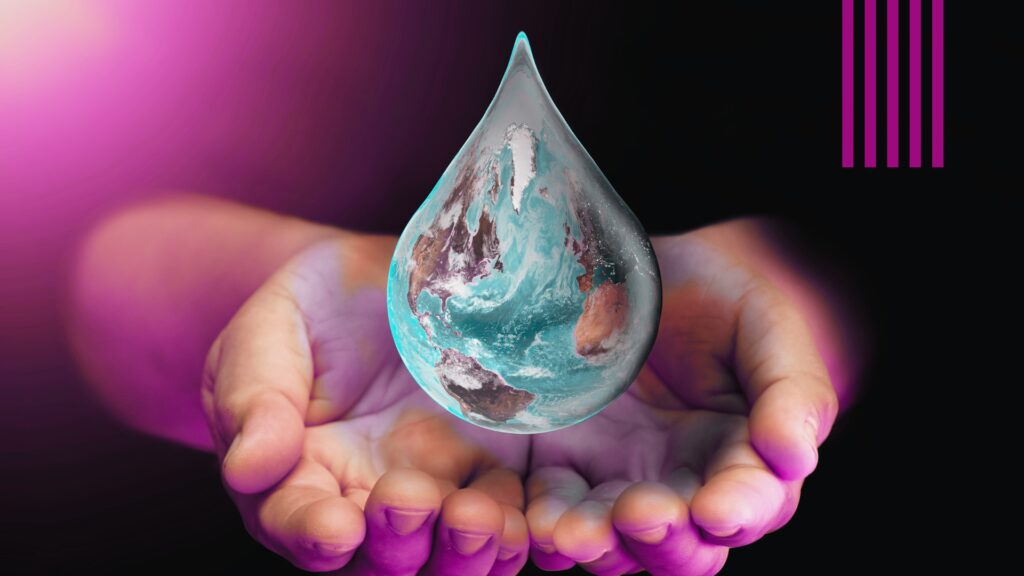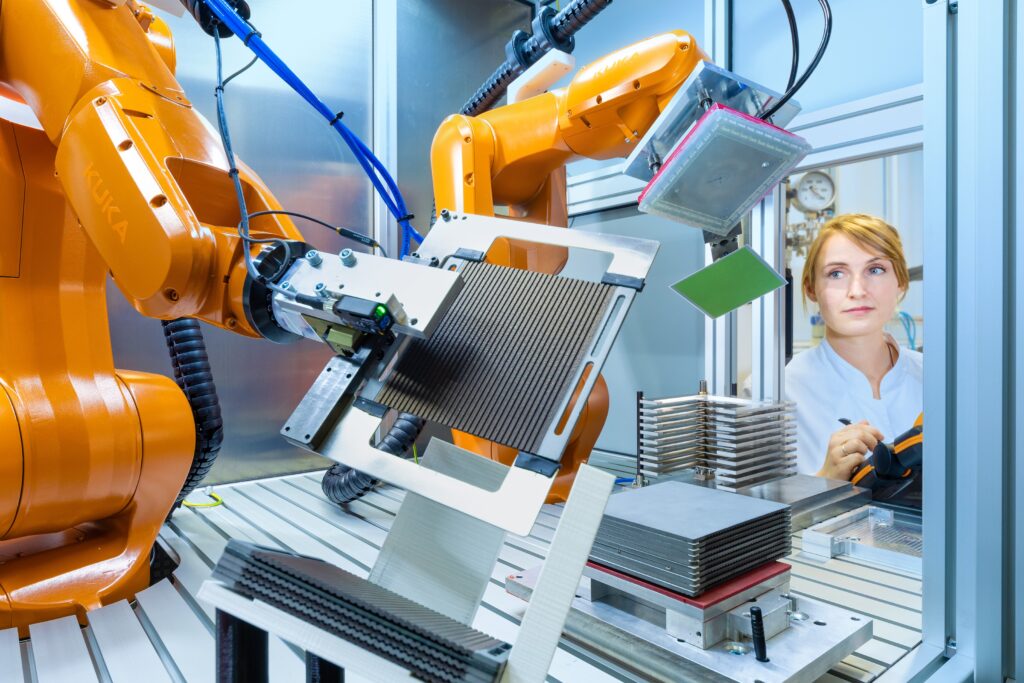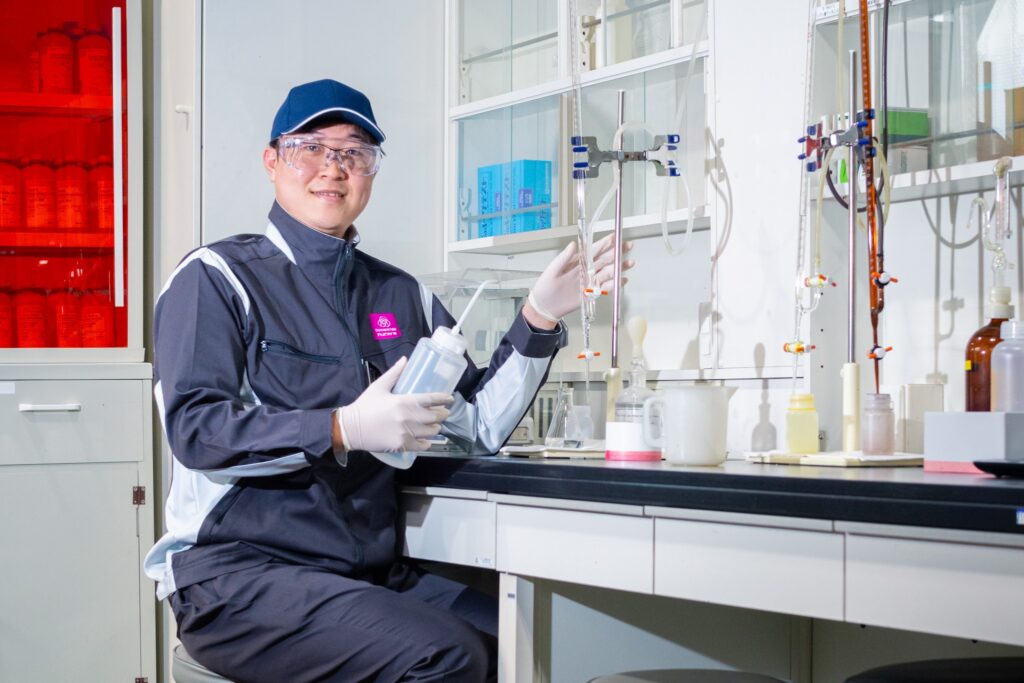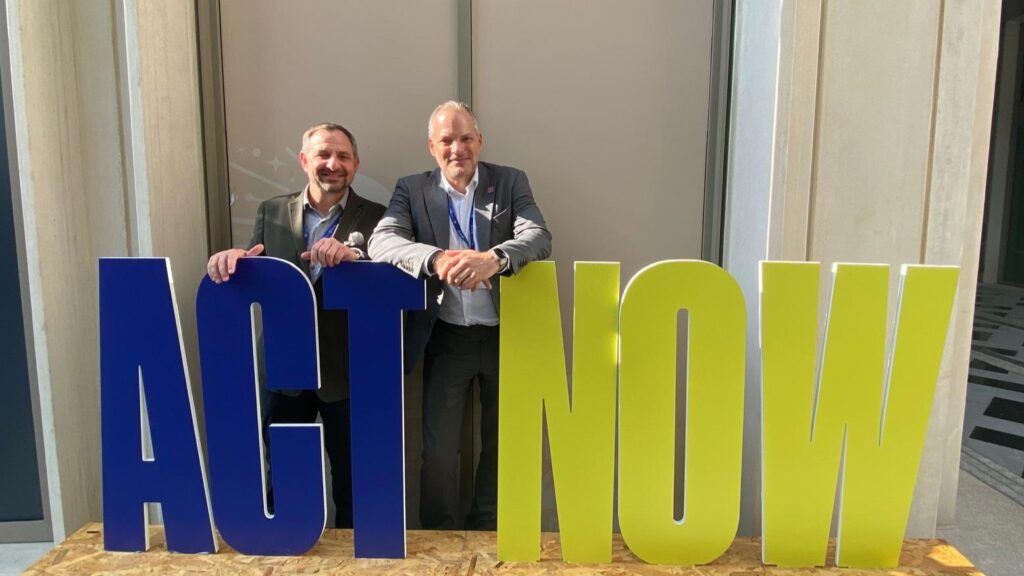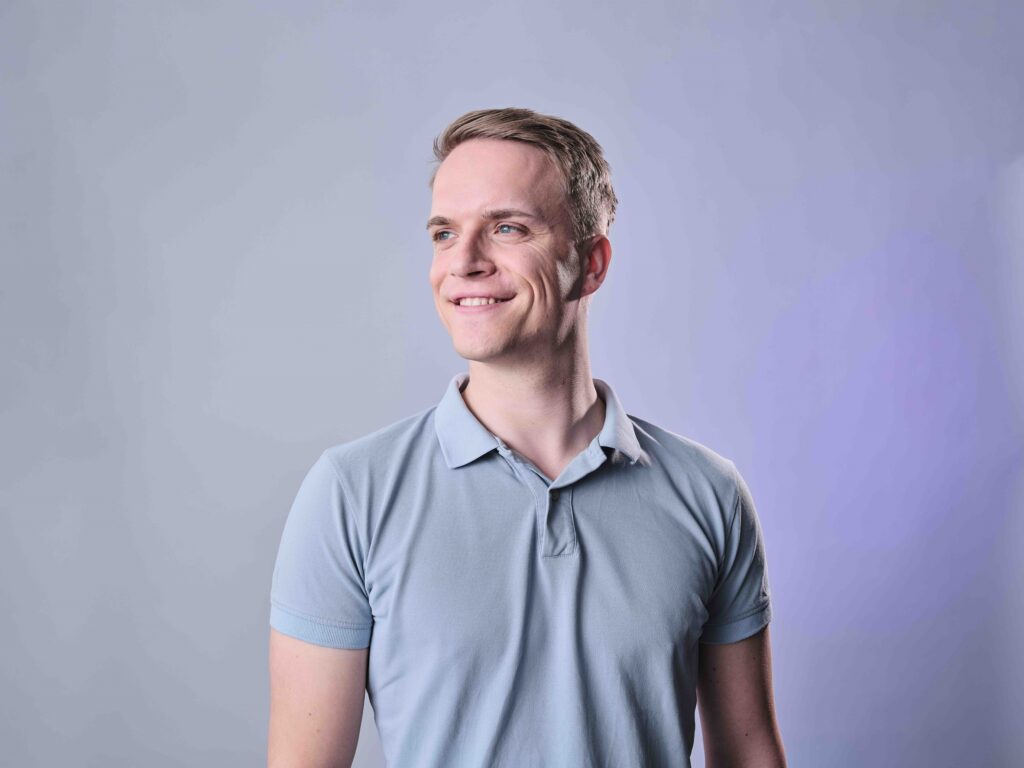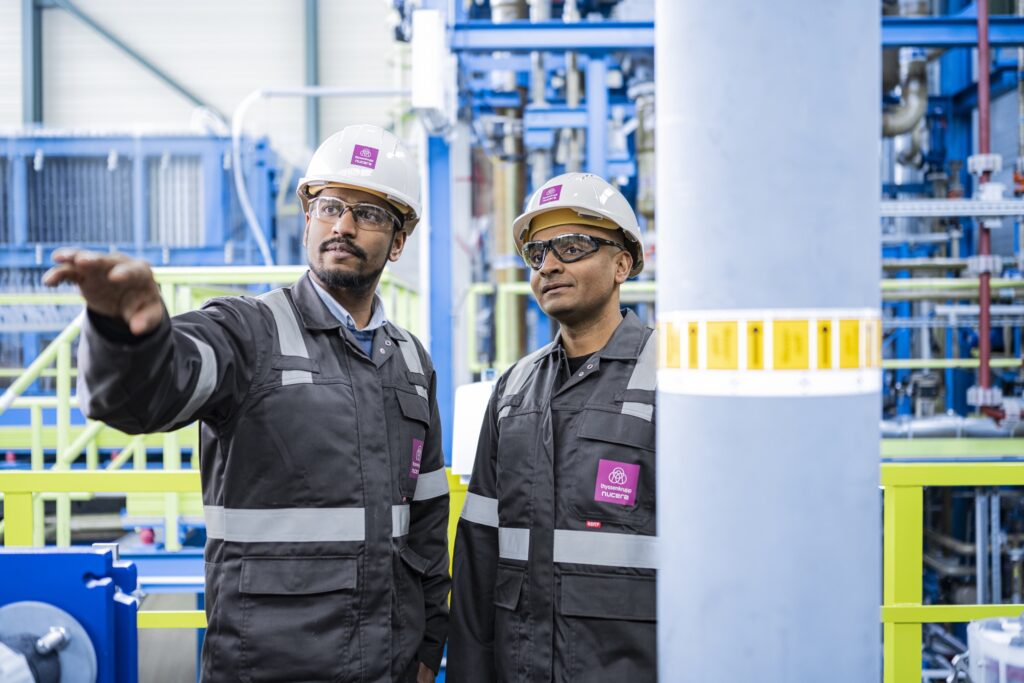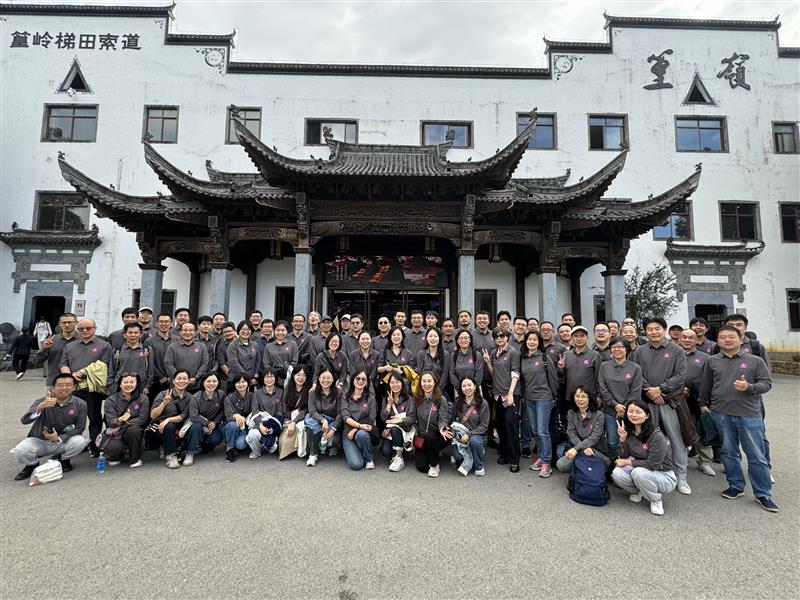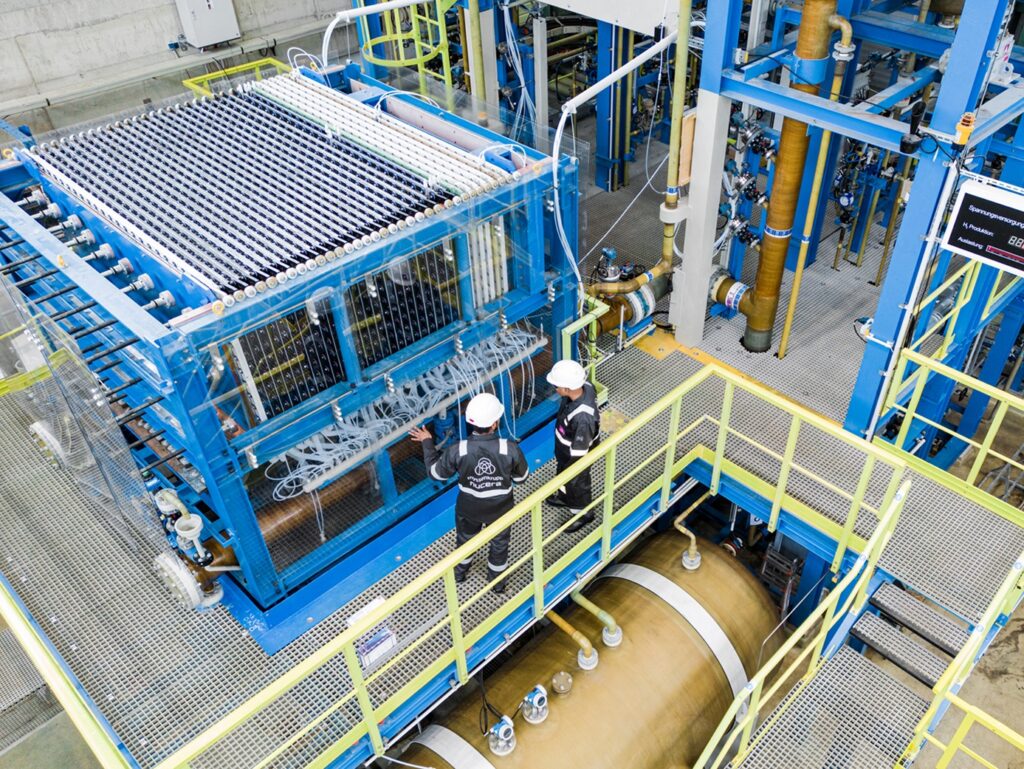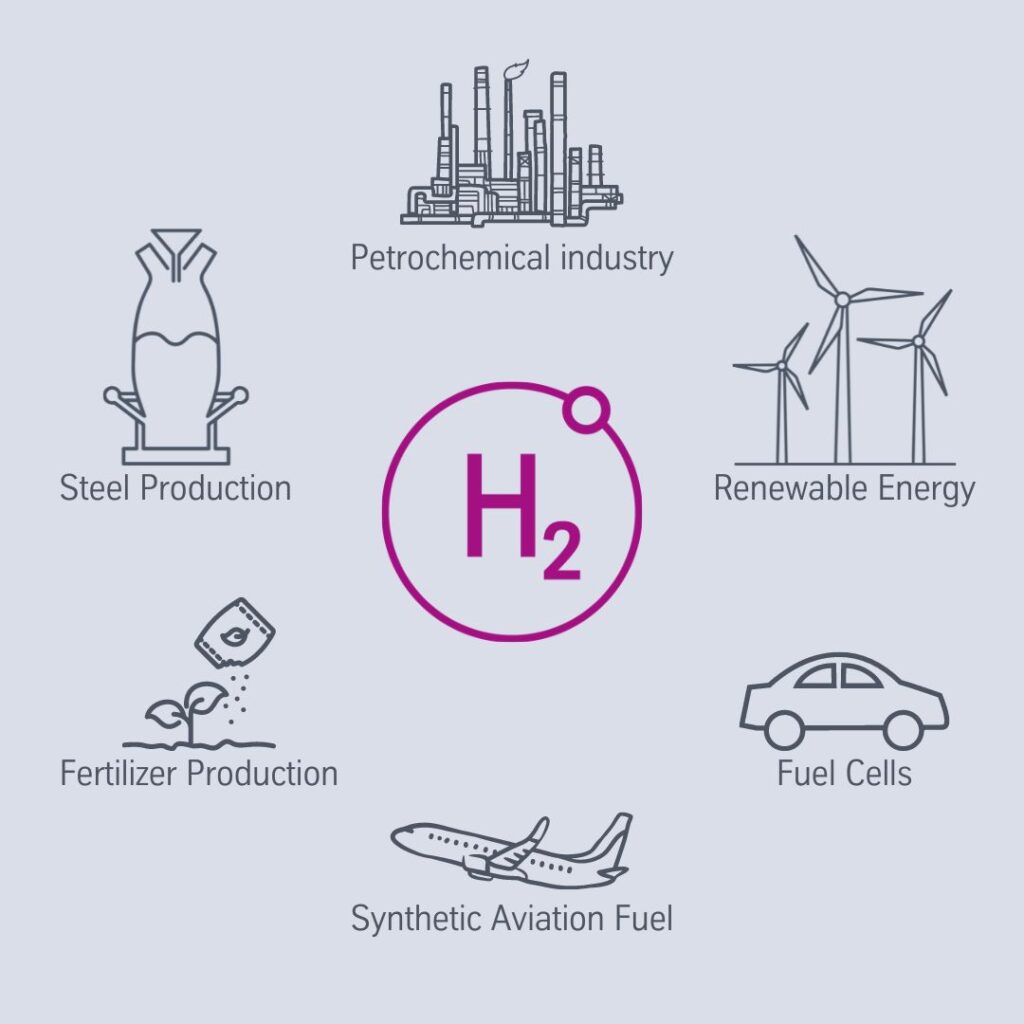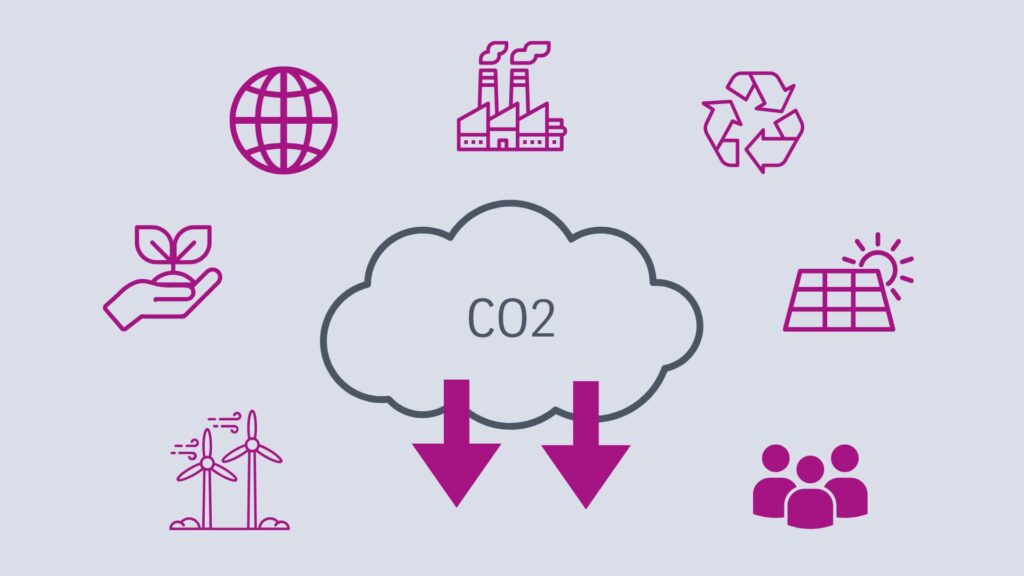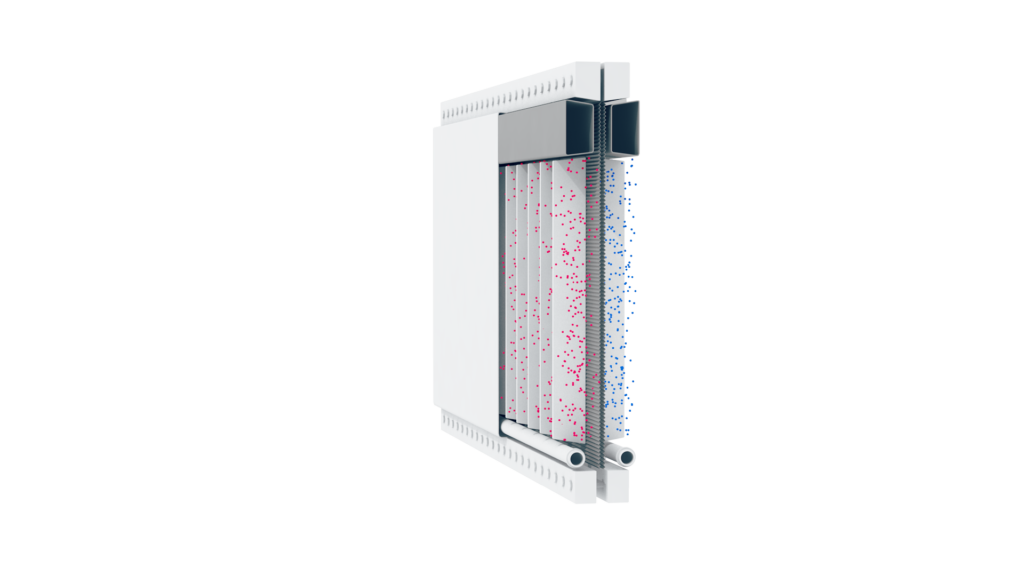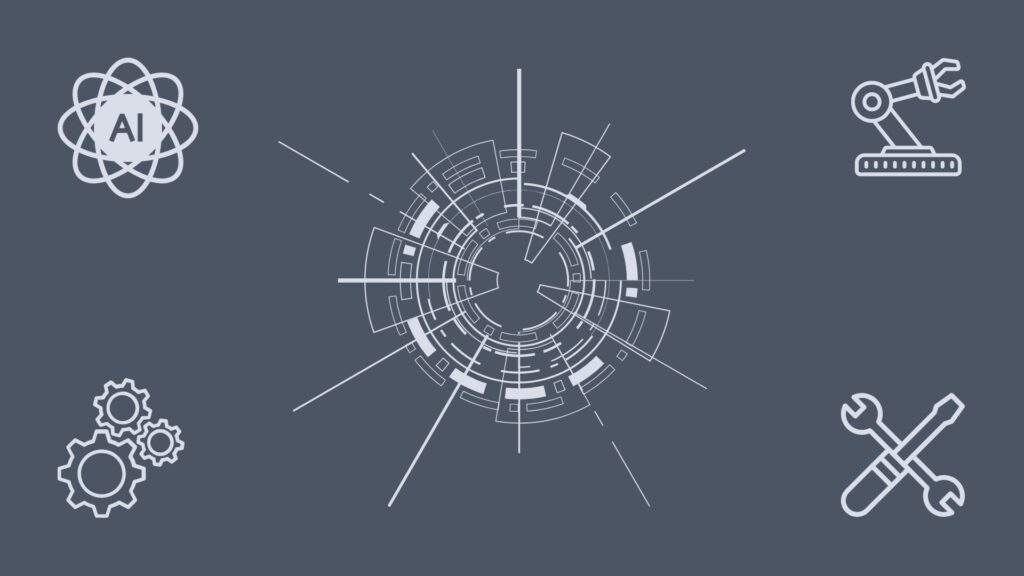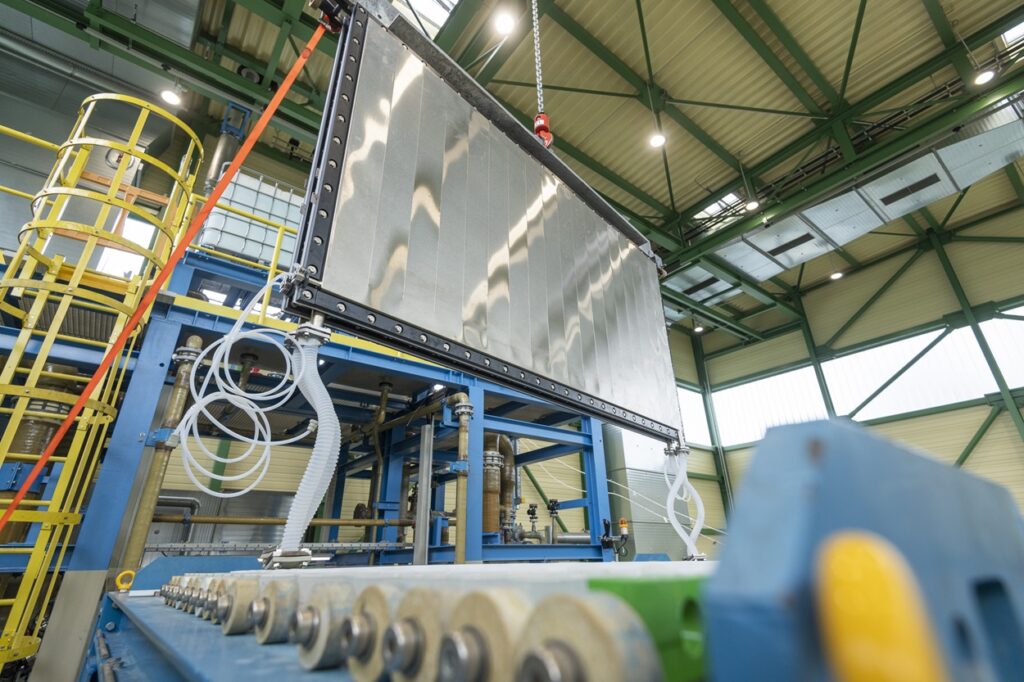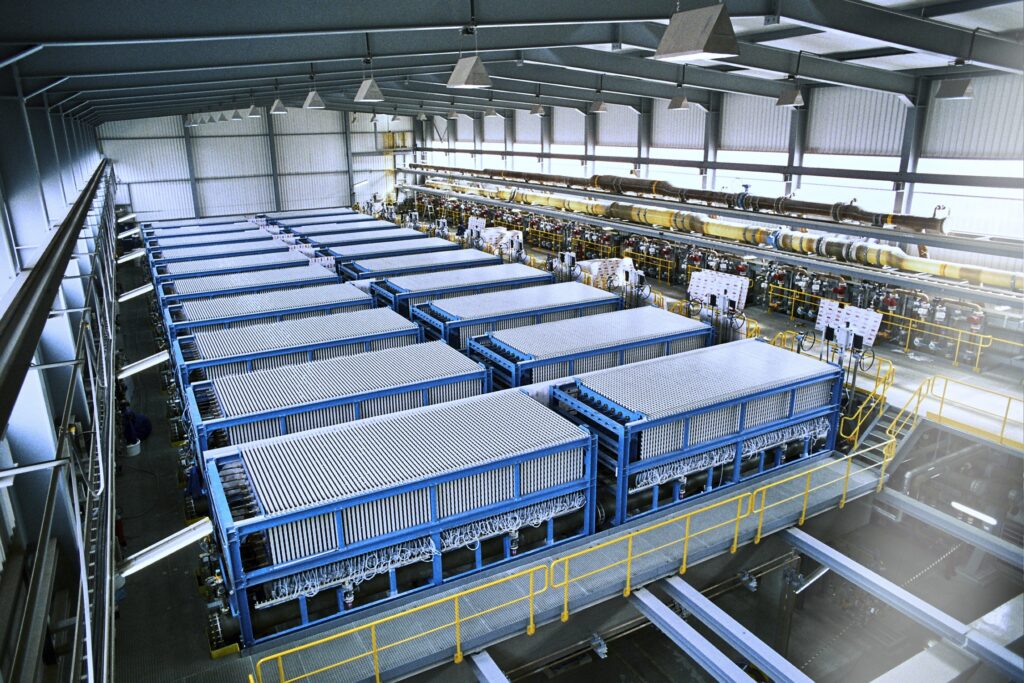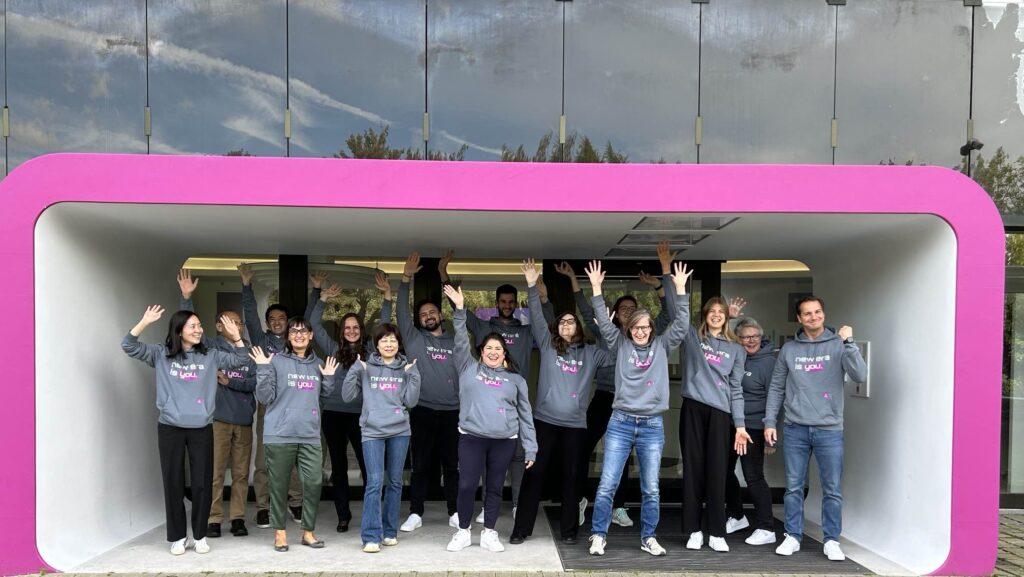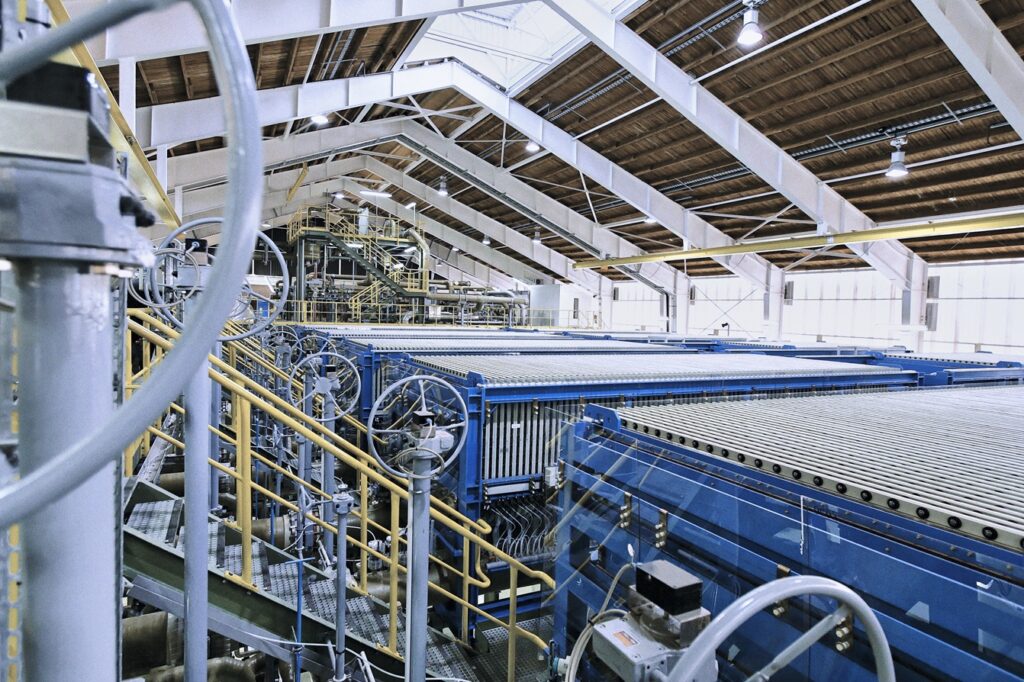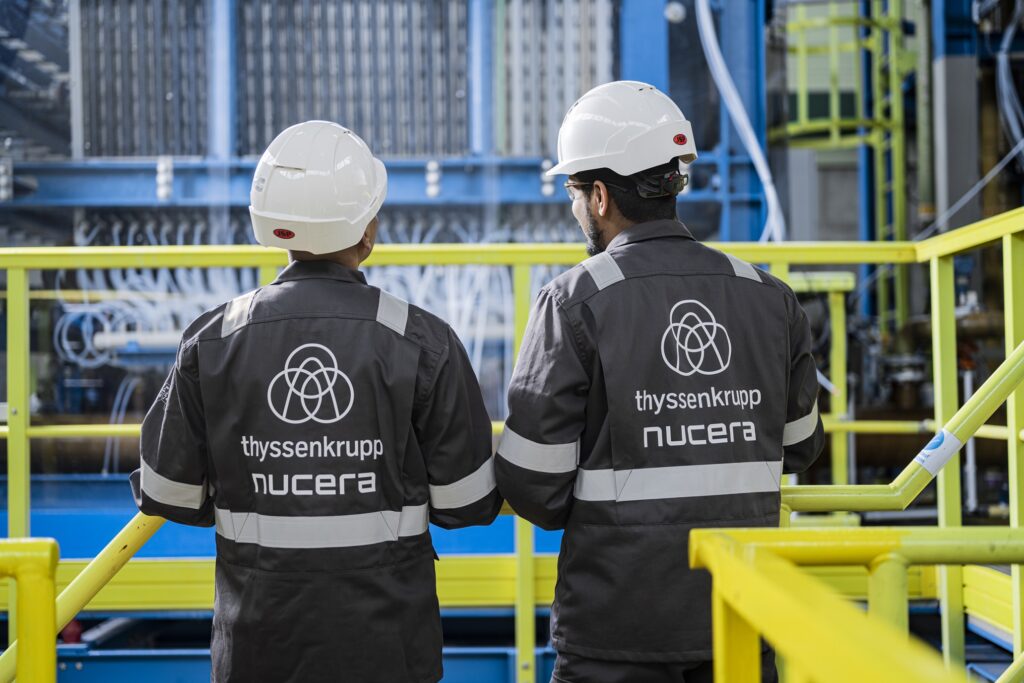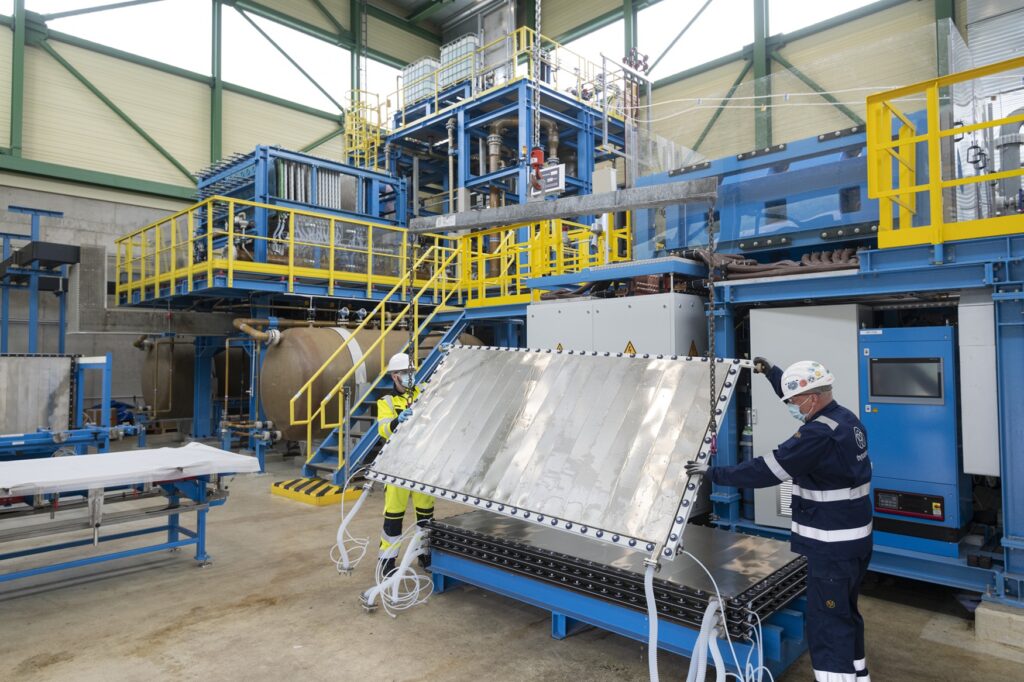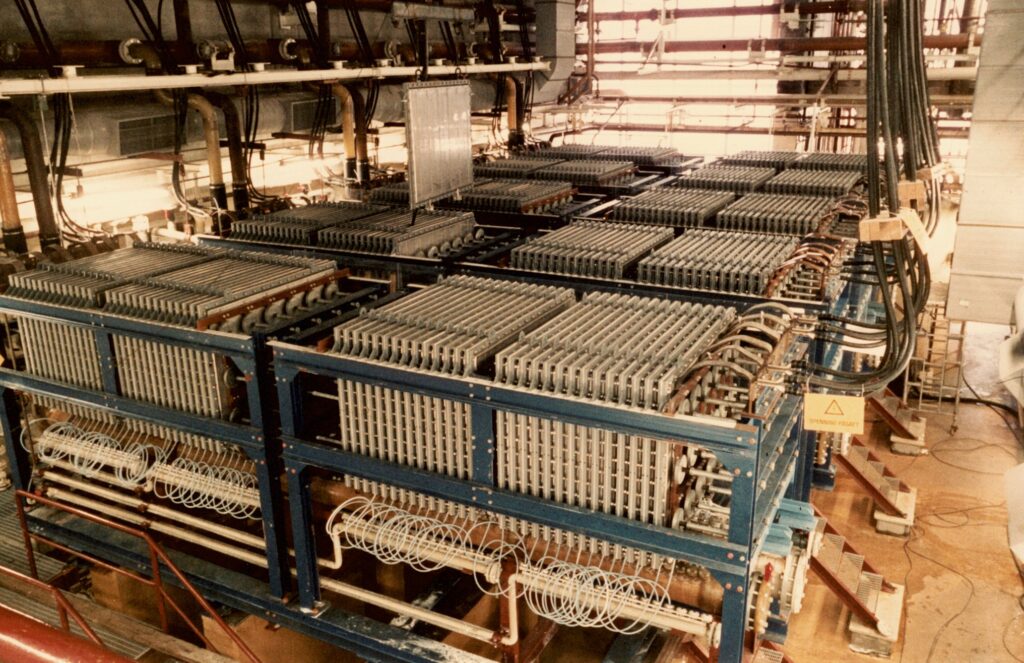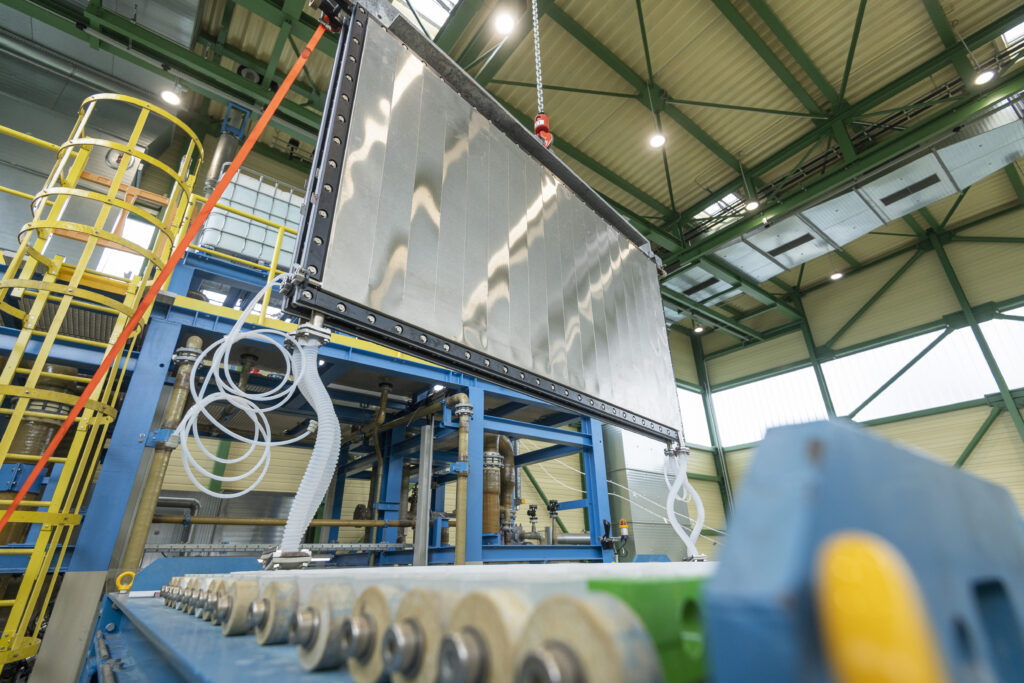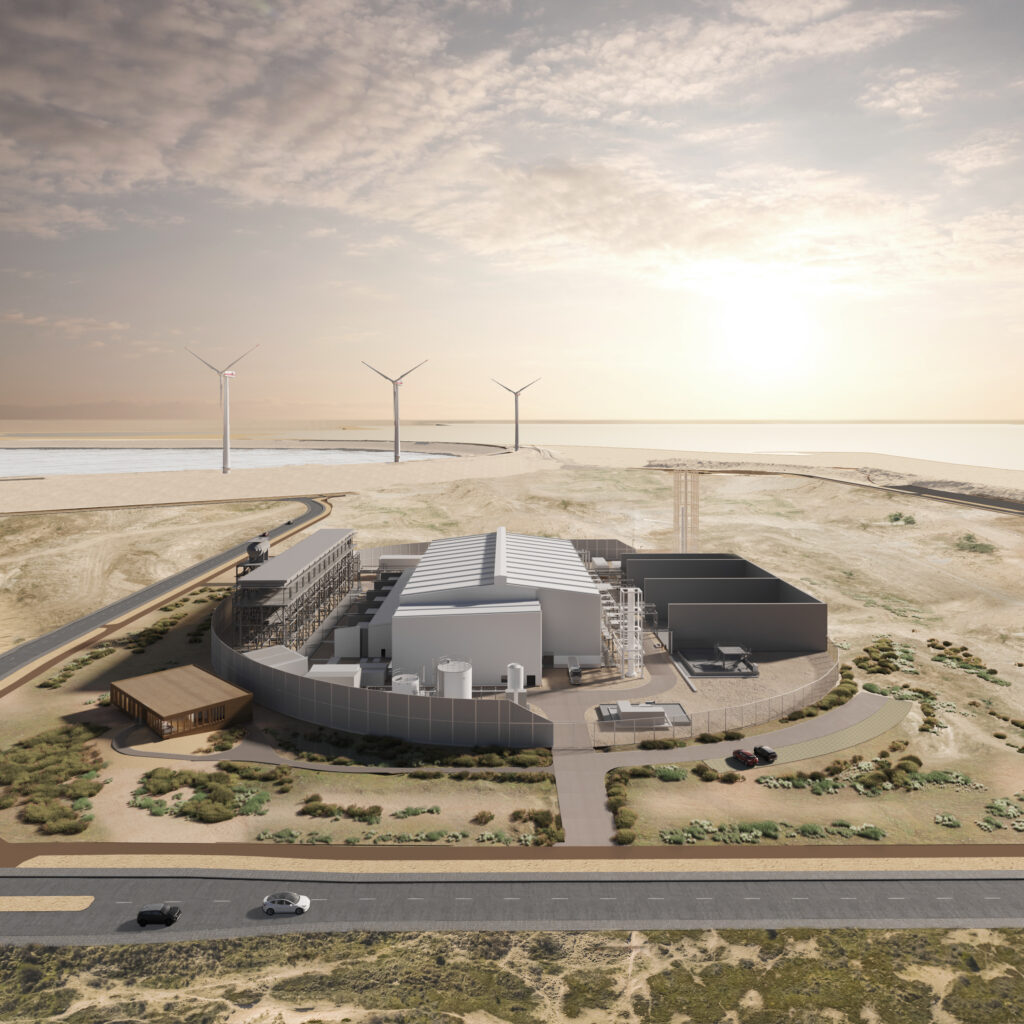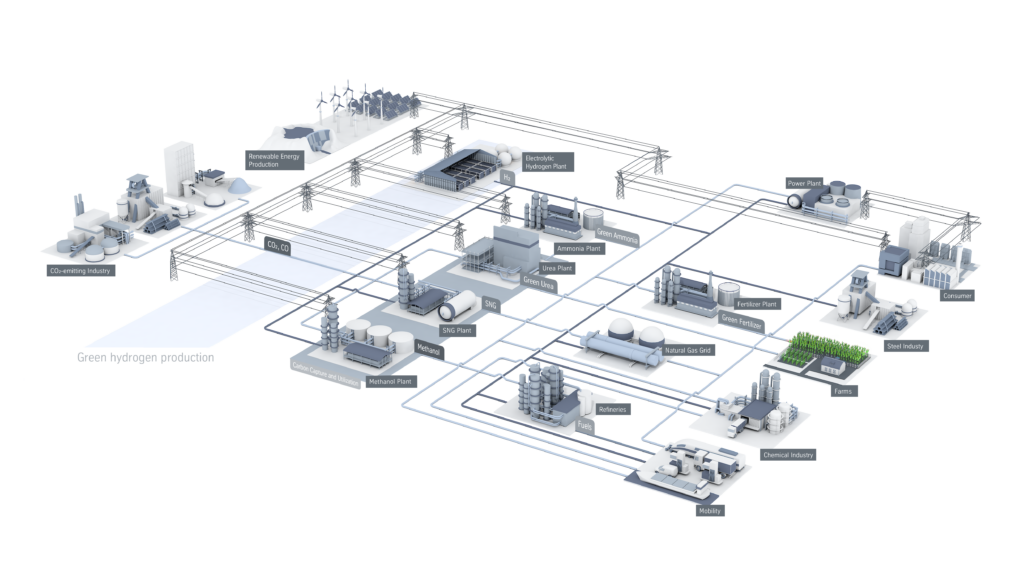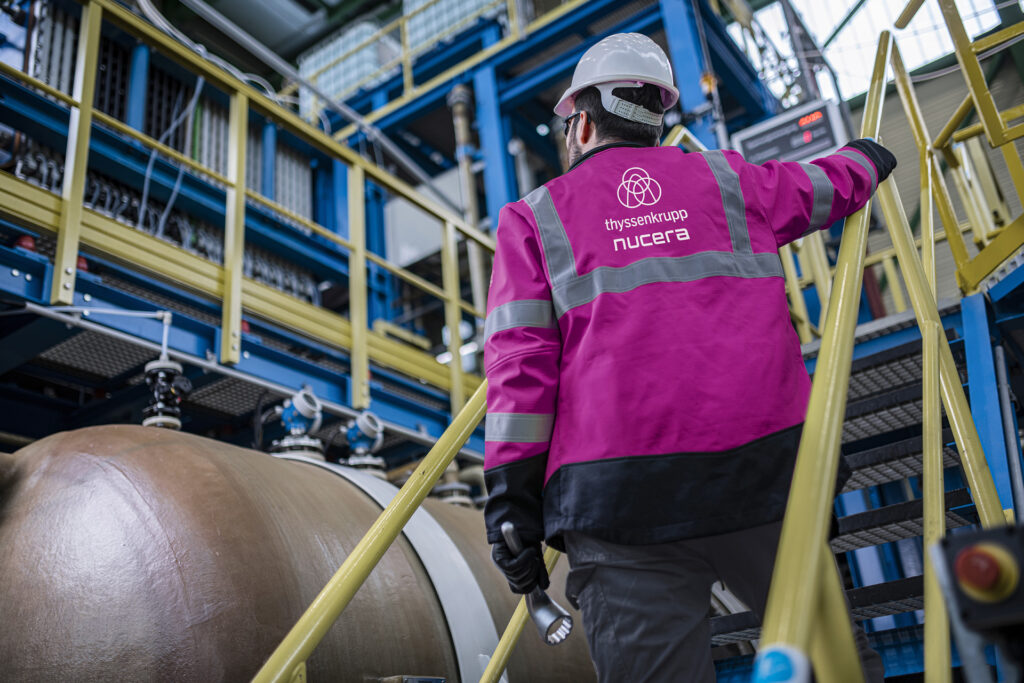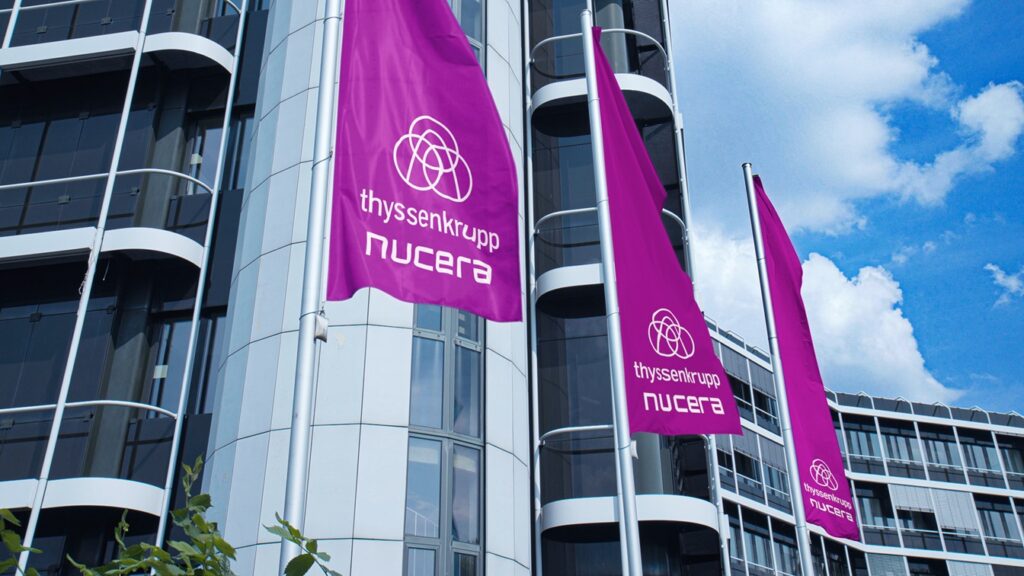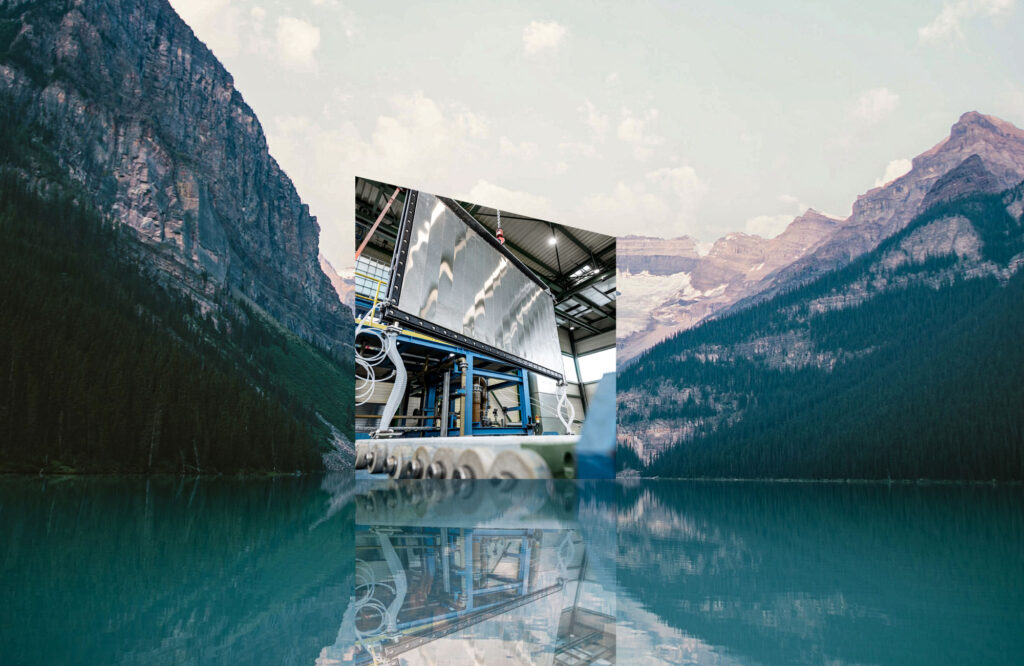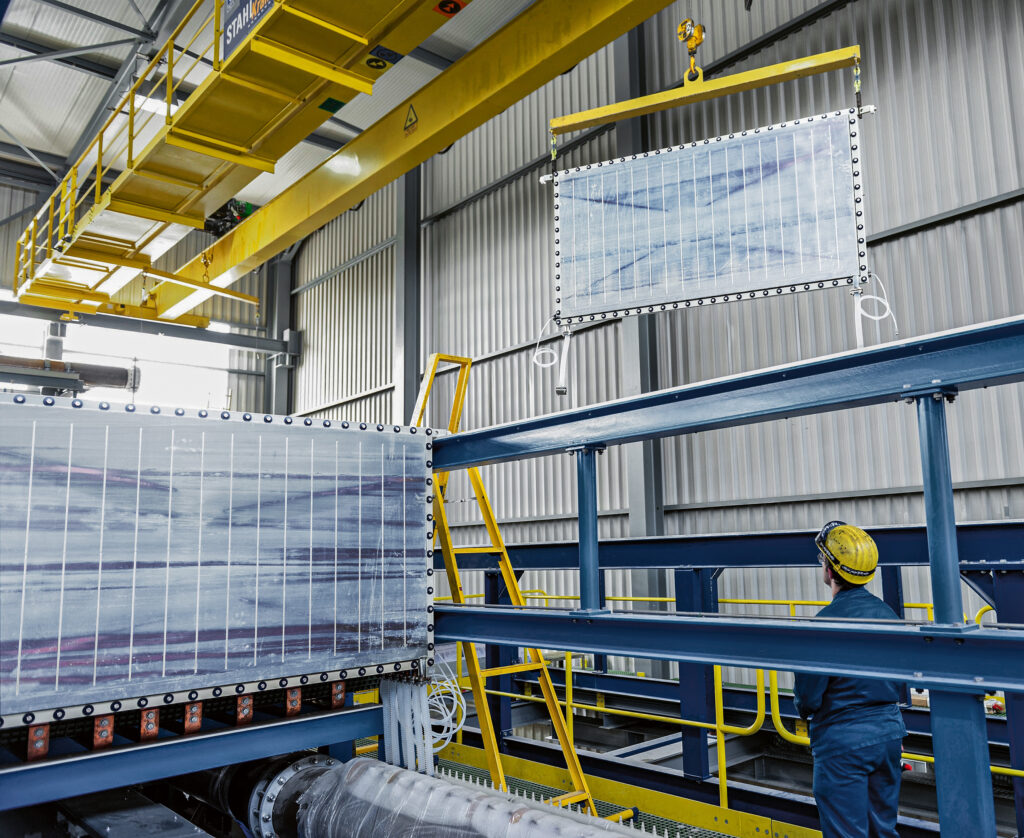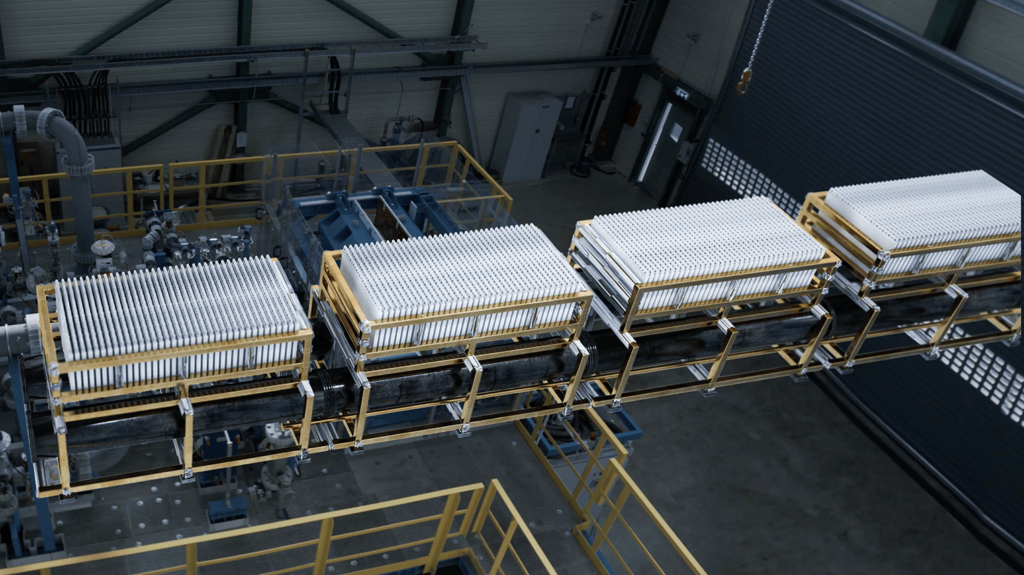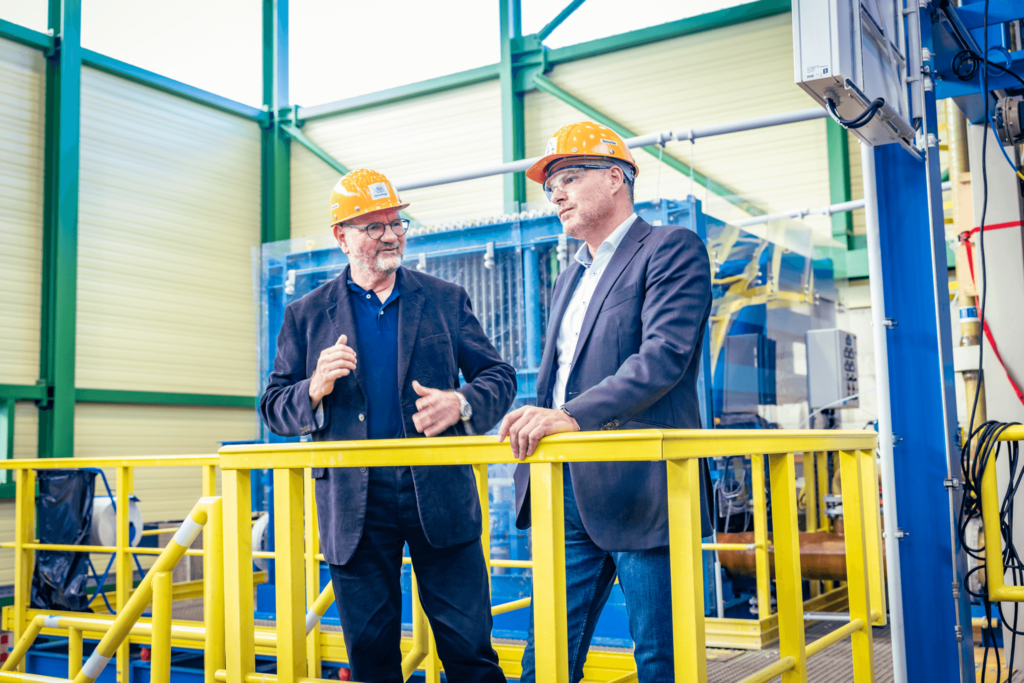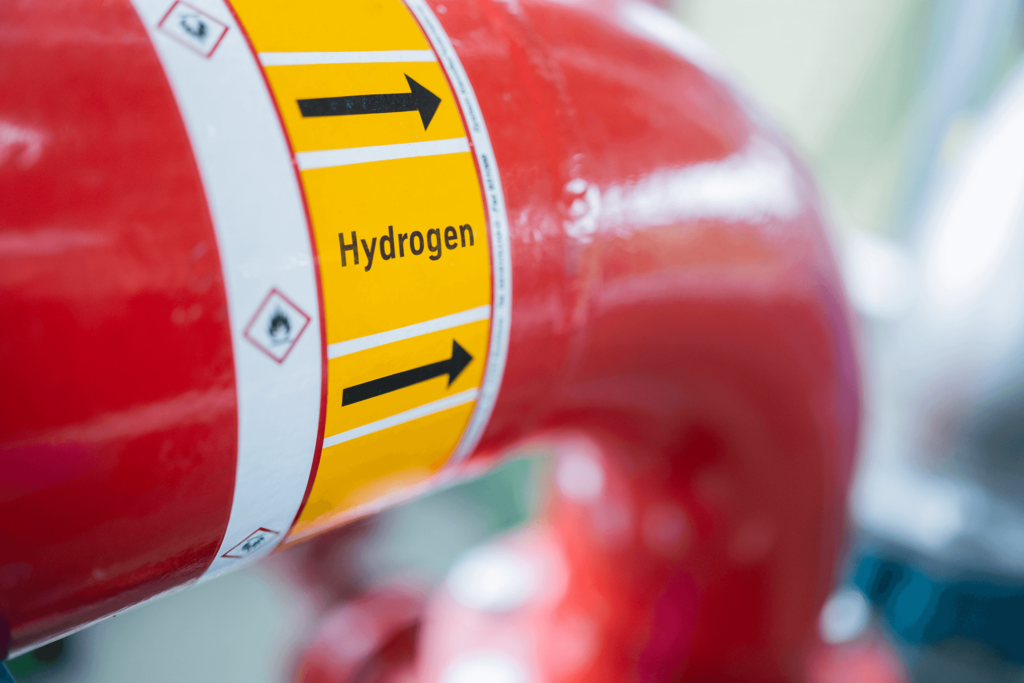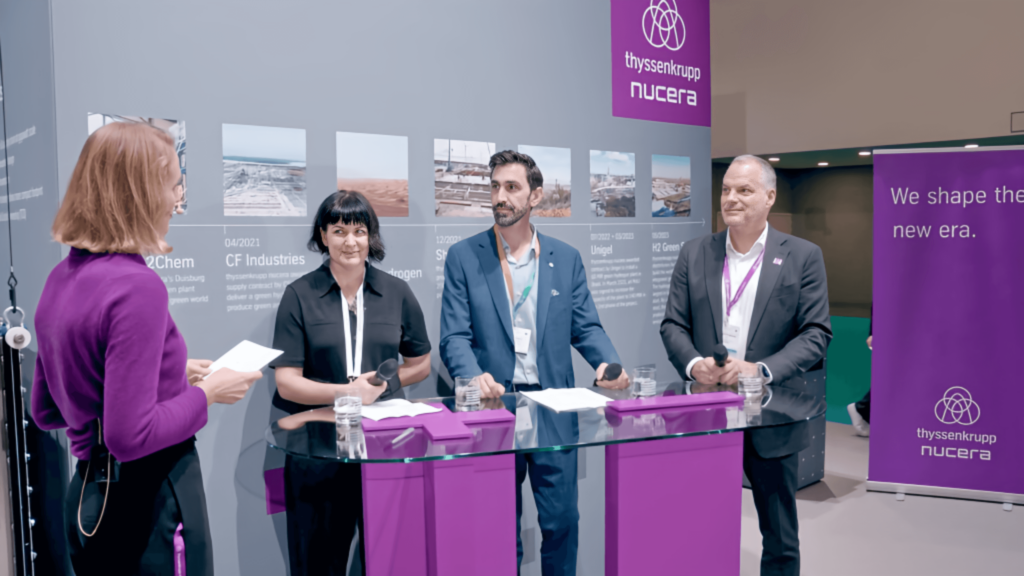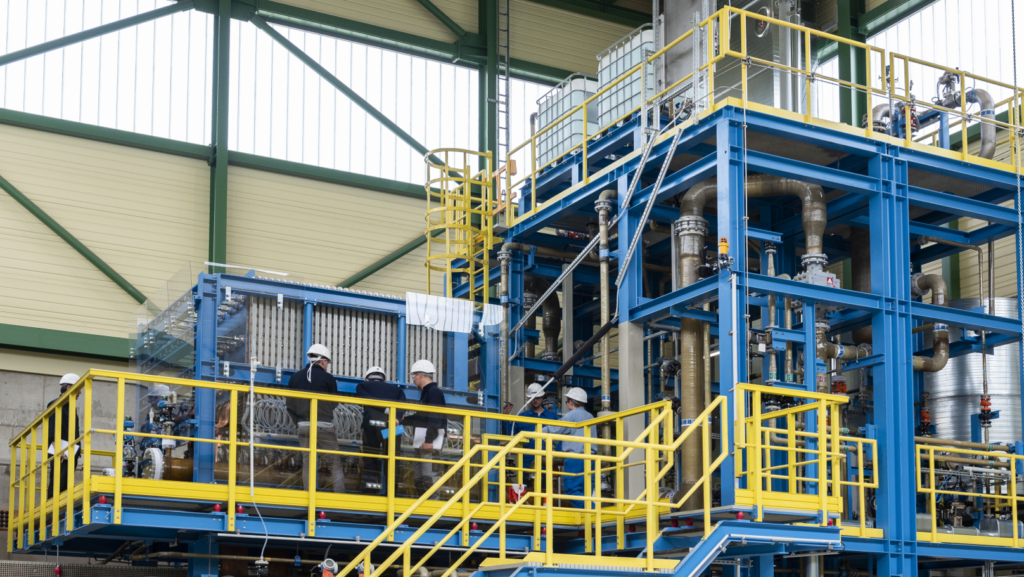"The time has come to get serious about hydrogen - and it's a fantastic time to get things moving!"
Katharina Immoor, Head of Communications & ESG, in conversation with Professor Alexander Michaelis and CEO Dr. Werner Ponikwar about the future role of hydrogen in the energy transition and the technologies that make it possible.
Professor Michaelis, Dr. Ponikwar, is there already a race to divvy up the market for green hydrogen?
The hydrogen market is in its infancy stage and still relatively small. This is especially true for green hydrogen, so there is little to divvy up at the moment. It’s already clear, however, that this market harbors significant growth potential with increasing momentum. This means we are only at the very beginning of the transition towards a green hydrogen industry.
What role do individual nations, and even entire regions, play? Are they drivers or being driven?
We are now actually seeing a certain amount of competition for investment from companies in their respective country. The reason is obvious: everyone wants to create as much added value and as many jobs as possible, and they use subsidies to achieve this. But this is not yet a race. In addition, it’s important to understand that this “race” is not about a single winner. We can only win if we all reach the finish line. In other words, we can only win when we have established a new, sustainable energy system with green hydrogen worldwide that is largely free of CO2 emissions.
Absolutely. I see the progression as an express train that has just started moving and is increasingly picking up speed. Right now, we have an opportunity not only to catch this train at an early stage but also to help determine its destination and ensure that we will have enough green hydrogen available for decarbonization. After all, green hydrogen must – and will – play a central role in our future sustainable energy system. As a physicist, I had doubts about the technology for a long time due to the loss of efficiency during hydrogen production. By now I have completely overcome those doubts and am convinced that it is possible. The time has come to get serious about hydrogen – and it’s a fantastic time to get things moving!

Haven’t we already had this opportunity with another sustainable form of energy: photovoltaics?
Yes. In fact, I was involved in the development at the time. It took more than 20 years of basic research – then, suddenly, things really took off. For a long time, people doubted the possibilities of this technology. Today it’s a huge market. And I believe the hydrogen market will be even bigger. But this time, we have to take a smarter approach. Governments have an important role in helping us ensure we have the right framework conditions …
… to prevent the same development we’ve seen with photovoltaics?
Exactly. We can’t risk losing such a globally important technology to individual countries, who can then not only dominate a market but also yield a great deal of power.
Prof. Alexander Michaelis
Professor Alexander Michaelis studied physics at the University of Düsseldorf, where he earned his doctorate in electrochemistry (Habilitation). After becoming a faculty member at the University of North Carolina in Chapel Hill, USA, he joined Siemens AG and later Bayer AG. Professor Michaelis has headed the Fraunhofer Institute for Ceramic Technologies and Systems (IKTS) since 2004. He is also the Professor of Inorganic Non-Metallic Materials at the Technical University of Dresden. He has received numerous national and international awards. In 2019, he was elected President of the German Ceramic Society (DKG e.V.) and the FDKG (Research Association of the DKG).
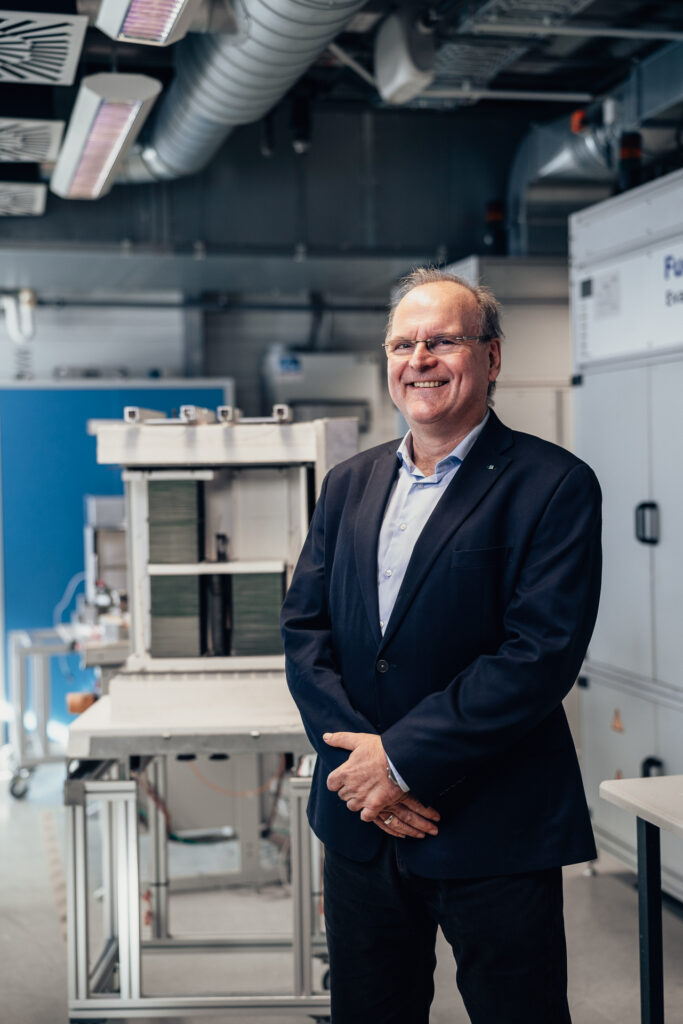
What do you recommend?
We need politicians and the industrial sector to work closely together on this mammoth task and develop clever funding guidelines that, among others, ensure that our industry remains anchored in the country.
With that in mind, will funding measures in the US and Europe be sufficient?
The US green hydrogen incentive program, the Inflation Reduction Act (IRA), takes a very smart approach because it is market-driven. In Europe, next to basic research, we also need to create strong incentives for companies to come and stay here.
Isn’t China taking a similar approach?
Yes, they are and have been for a very long time. An example is their support for photovoltaics. I hope that the EU recognizes that government subsidies, especially for industrial companies already active in this field, are a smart move. The EU and Germany should also take less of a scattergun approach and instead establish clear objectives when promoting technologies and companies. Other nations, and not just the US, are somewhat ahead of us in this process.
I think the US certainly has something to offer the EU that is worth emulating. But let’s not forget that the US has had a late-start advantage. It can build on the knowledge and well-functioning systems already developed in Europe. The result is a simple system well-suited for rapidly creating a supply and demand market without a lot of regulation and strict rules. And, at the end of the day, that’s precisely what it’s all about. Without sales opportunities, there will be no production and therefore no technology.
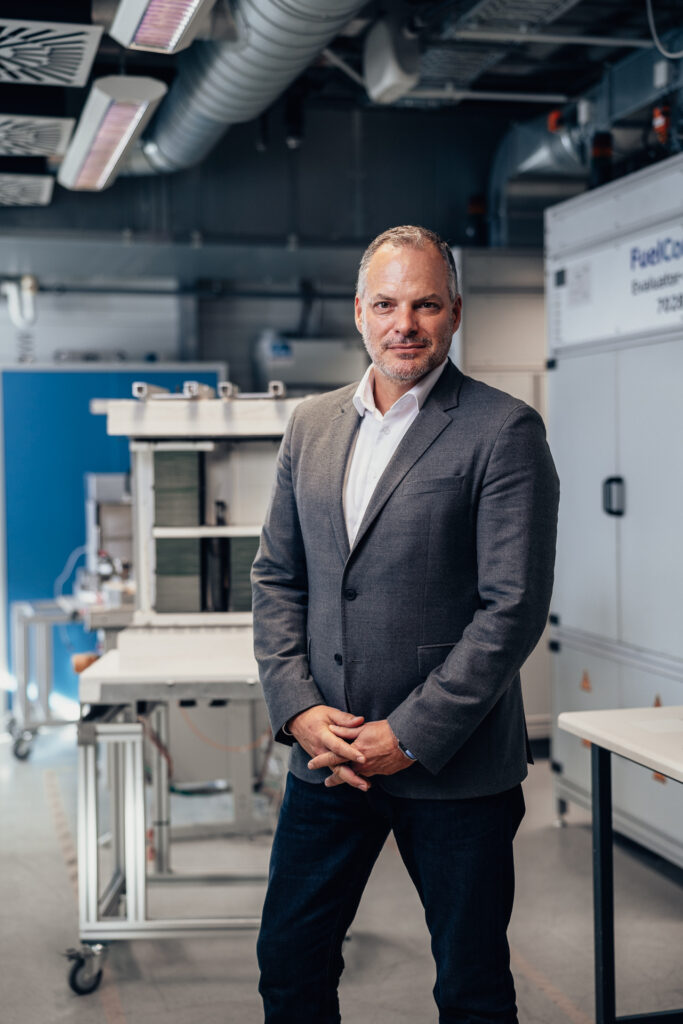
Dr. Werner Ponikwar
Dr. Ponikwar began his career as Manager Controlling at Degussa AG. He has worked in various positions and locations, including Finance and Controlling, Project Management, Business Development and Marketing. In 2006, he joined Arthur D. Little as a strategy consultant. In 2008, he joined Linde AG, where he held various management positions in engineering and industrial gases. From 2017 to 2021, Dr. Ponikwar was CEO/Managing Director of Linde Hydrogen Fuel Tech GmbH. Since July 2022 he has been the CEO of thyssenkrupp nucera AG & Co. KGaA. Dr. Ponikwar studied at Ludwig Maximilian University in Munich and holds a Ph.D. in chemistry.
What role does science play in accelerating the market’s development?
Right now, we are in the phase where exponential growth is just beginning. Scaling up by boldly mass-producing green hydrogen, building the necessary electrolysis plants, and driving down costs, must be done now and in full force. This process requires an enormous amount of investment. Research helps by ensuring that, on the path to improving this technology, we achieve that the required efficiency increases while the cost declines. Everyone currently involved in this start-up phase has a tremendous opportunity. But we also have to be vigilant. When the tipping point comes, and costs have come down to a certain level of productivity, then we need to make sure the market stays here and does not migrate to China, as was the case with photovoltaics. This is why we need to prepare ourselves now for the risky times ahead when countries start undercutting each other on costs, which incidentally also happens as a result of subsidies.
That’s a very interesting point. Electrolysis systems obviously have to get even cheaper. The only way we can create – and retain – a truly sustainable market is if hydrogen, as an attractive energy source, is cost-competitive. But it can’t be competitive if it costs 15 euros per kilo. We have to move into much lower price ranges. I believe we are already well on our way to doing this. With our advanced alkaline water electrolysis, we at thyssenkrupp nucera are already moving very strongly in the direction of series production. This is the only way to achieve further substantial cost reductions.
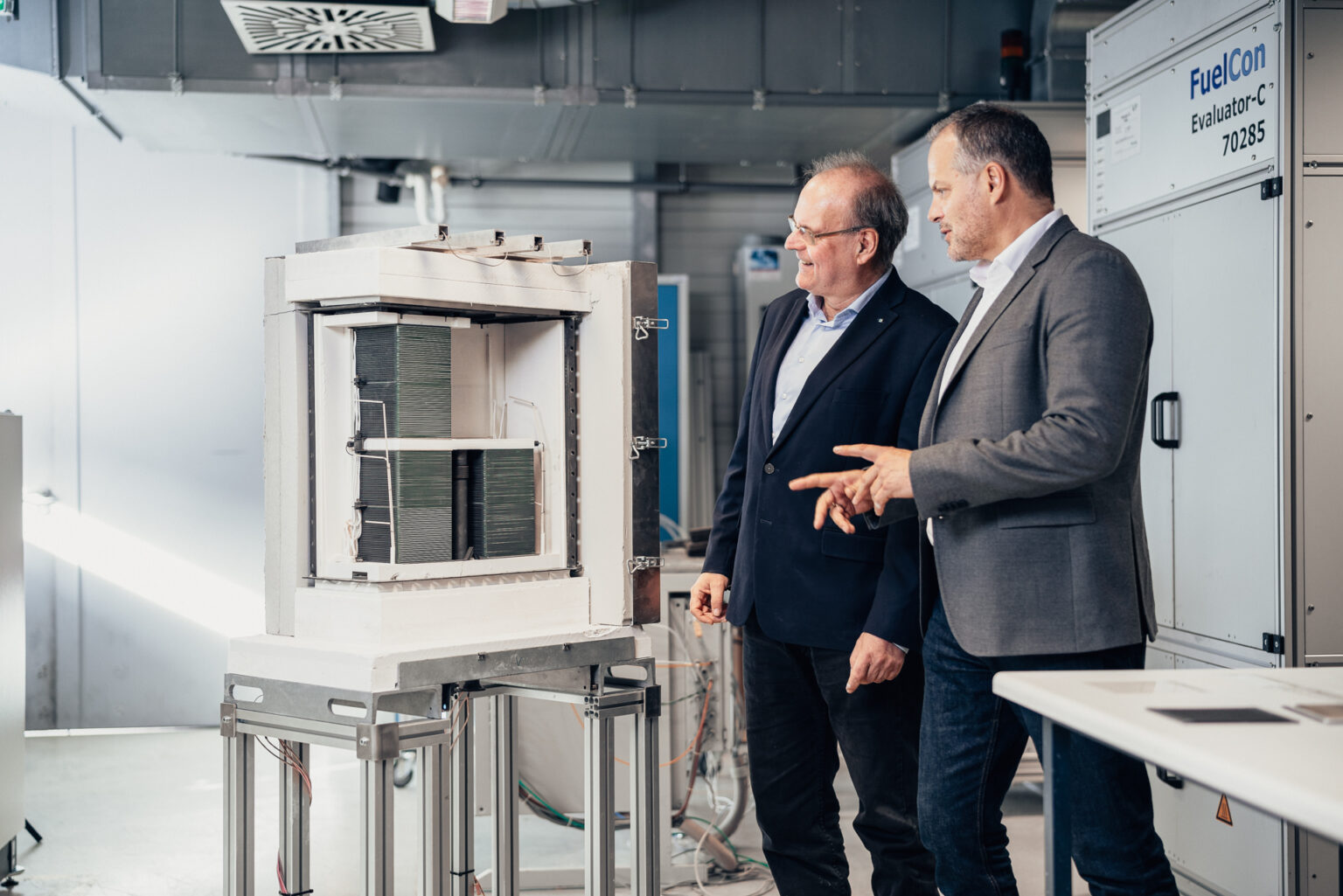
But where do you draw the line before a ruinous price war?
Good question. Let’s go back to your comparison with photovoltaics, Professor Michaelis. Fortunately, the electrolysis plants we build are more complex than solar plants. I am more concerned about ending up with cut-throat competition, just as we have seen with wind turbines. The pursuit of higher, faster and cheaper is not necessarily sustainable or conducive to quality. We have to be careful not to get involved in a race to the bottom that ends up hurting the market instead of helping it.
Professor Michaelis, climate protection plays a decisive role in the emerging market for green hydrogen as a new, CO2-free energy source. What approach should we take to leverage the most potential?
We want to build an electricity sector that no longer extracts hydrocarbons from the ground, but moves away from fossil fuels, such as coal, natural gas and oil, towards renewable energies such as wind and solar power. But this clean energy must always be available when we need it, for instance, for industrial use. We simply cannot have an energy transition without storage technology. Here is where hydrogen comes into play, as safe storage of renewable energies which is impossible without hydrogen. And that is why hydrogen will play an incredibly important role in the energy transition.
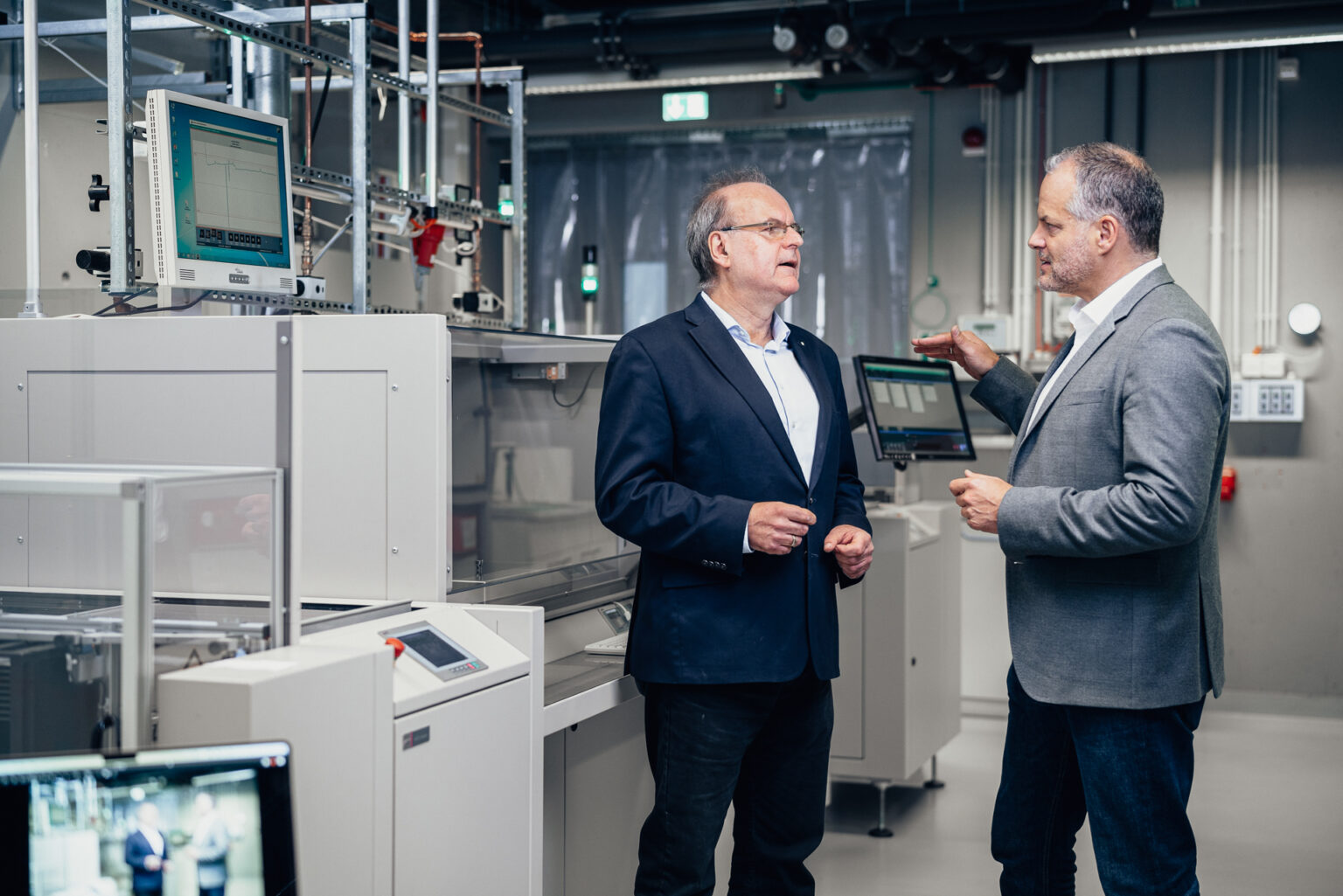
What about alternative storage options such as batteries?
They are limited in terms of their energy density. We are aiming for capacities of 300 watt hours per kilogram. Fossil fuels offer over 10,000 watt hours and liquid hydrogen 30,000 watt hours per kilogram. We will also never be able to fly with batteries. We will remain dependent on hydrogen, or the e-fuels produced from it. For the entire new energy infrastructure, we need to create for climate reasons, there’s simply no alternative to hydrogen. But I don’t see this as just a climate issue; it’s also a long-term issue.
Why?
Because at some point we will have used up all the fossil fuels. What will we do then? Fossil fuels are also important for industrial chemical processes and are actually far too valuable to simply burn.
What other solutions offer potential in the future?
In Germany, we will never be able to meet our own demand for hydrogen …
… because we can’t install enough renewable energies?
Precisely. So, our dependency on other countries and geopolitical power shifts will remain. We will have to manage this skillfully. Which is why it is so important for us to remain leaders in plant and process engineering.
Steel production is extremely CO2-intensive …
… yes, in fact, there is enormous savings potential in this industry to use climate-friendly green hydrogen. Converting steelworks to green steel production can make a meaningful contribution to improving the CO2 balance of every country. The quantities here are so vast that the leverage effect can be considerable. This is why it is worth exploiting this potential early on. This is already technologically possible today.
I fully agree. Another important application is the use of green hydrogen for the Haber-Bosch process. This large-scale industrial chemical process is used to synthesize ammonia, which is then used to produce fertilizers, for example. About half of the world’s population depends on this fertilizer for food, so the importance of this process cannot be overemphasized.

But that process also emits a significant amount of CO2 …
… but this will change if we move away from fossil natural gas and its high CO2 content and use green hydrogen instead in the Haber-Bosch process. Furthermore, ammonia is an excellent hydrogen carrier and can make a significant contribution to solving the issue of energy transportation in the future.
And the cement industry?
It is another huge CO2 emitter. This leads us to a special electrolysis technology known as high-temperature electrolysis. Not only can this technology produce green hydrogen, but it can also simultaneously reduce CO2 to CO. This is referred to as “co-electrolysis”. The enormous quantities of CO2 from the cement industry can therefore be used to produce synthesis gas via high-temperature electrolysis. Synthesis gas is a mixture of hydrogen (H2) and carbon monoxide (CO) and can be used directly to produce climate-neutral chemicals and synthetic fuels, so-called e-fuels. Synthesis gas produced from high-temperature electrolysis is therefore ideal because it can be used to remove CO2 from the environment. This makes the technology CO2 negative, which is very positive. The steel industry is already using conventional synthesis gas produced from natural gas. This means the use of synthesis gas produced by CO electrolysis no longer requires a process conversion. Since the carbon now comes from the CO2 in the environment and remains partly in the steel as an alloy component, it is even possible to produce CO2-negative steel. These are some great opportunities.
The potential for electrolysis to produce green hydrogen is impressive. But what are the risks associated with electrolysis technologies?
I don’t see too many risks with electrolysis as a whole. When I look at the raw materials used, I am more critical of PEM than alkaline water electrolysis. Proton exchange membrane (PEM) electrolysis uses a solid polymer electrolyte – the proton exchange membrane. PEM requires rare earths such as iridium and platinum as catalysts. These are two of the world’s rarest and therefore most costly metals. There are no known alternatives to iridium in PEM electrolyzers.
What about for the high-temperature electrolysis you are developing at IKTS?
Yes, we should definitely not forget the third electrolysis technology: high-temperature electrolysis. This technology also only uses raw materials that are available in sufficient quantities. It’s important to remember that water is an essential resource for all electrolysis technologies…
… whereby there are very well-established supply methods, such as large-scale desalination.
If we compare electrolysis processes, which one has the edge?
WE and PEM are the two technologies that have currently reached market maturity and have a wide range of applications. PEM technology is a relatively new technology compared to AWE, and still experiencing some teething problems. But this will improve with time. In terms of efficiency – a very important performance parameter – both technologies are in a similar range. And we are at a point where we physically can’t squeeze much more out of them. This means a fundamental advantage of PEM over AWE is the flexibility of the stacks. AWE has a certain degree of flexibility in terms of the speed with which it can work with different load profiles. But a PEM stack is generally faster.
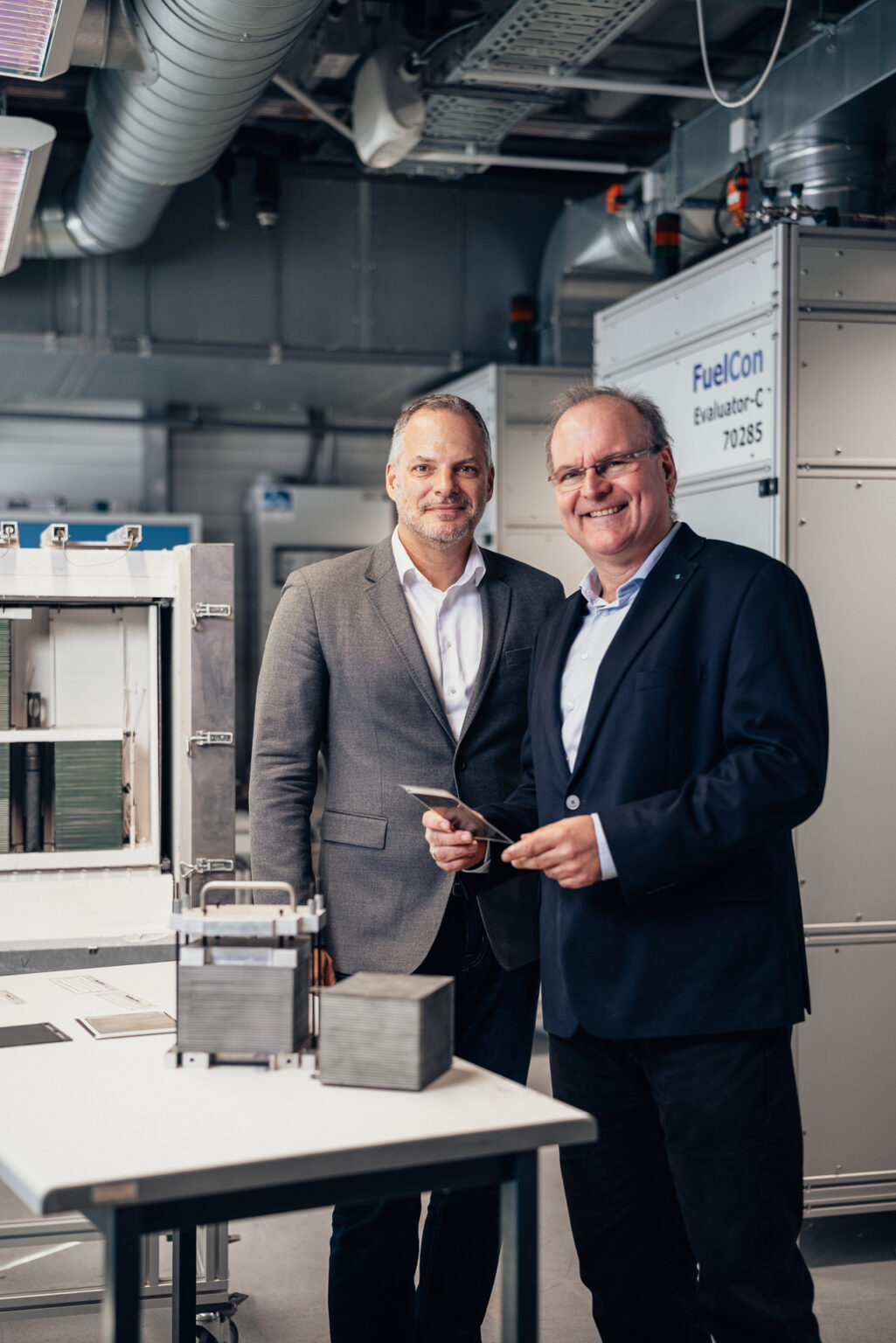
Is flexibility still the major advantage?
No longer with larger systems. This is because the stack is no longer the speed-determining component. Instead, this is driven by other system components that can no longer be ramped up and down as quickly due to their size. Even with small systems such as our 2 MW Carbon2Chem® test facility, we were able to show that we can respond to a changing load profile very well. In other words, the speed is sufficient enough to accommodate the fluctuating flow of renewable energies.
AWE is based on chlor-alkali production, which has existed for more than 100 years and involves huge plants and a very high level of technological sophistication. There is no alternative to these for hydrogen production as they are currently the only plants offering the necessary scaling. In contrast, I don’t know why you would need PEM. The efficiencies are very similar, with the dynamics of these large plants actually secondary. But PEM has several disadvantages, such as critical raw materials and a lifespan issue. In my opinion, everything PEM can do, AWE can do too, or even better.
What about high-temperature electrolysis, where solid oxide electrolyzer cells (SOECs) are used?
Even though the development of high-temperature electrolysis is still at an early stage, it already offers significant advantages. The efficiency is significantly higher than with AWE or PEM – provided that the very high temperature can be achieved.
How can it be achieved?
Ideally, excess heat is available that can be fed to the high-temperature electrolyzer. It can then be brought to the necessary temperature to operate the electrolyzer effectively with a high level of efficiency. If you can achieve this, then the system is unbeatable in terms of pure logic and physics. It will clearly be more cost-effective because you can essentially produce significantly more hydrogen with the same power and the same number of electrons.
What else is standing in the way?
There are still issues, as replicating the load profile with high-temperature electrolysis is a tremendous challenge. You have to maintain very constant high temperatures in order to ultimately achieve the very high level of efficiency. Is this possible? Yes, I think it is.
High-temperature electrolysis is a very exciting area. Water can already turn to steam at just 100 degrees. Using steam, you can increase the efficiency of converting electricity to hydrogen by about 30 percent. That alone is a key unique feature as well as a considerable advantage. The second advantage, I mentioned earlier, is the co-electrolysis capability, which means you can not only turn water into hydrogen but also reduce CO2 to CO.
What are the advantages?
gas is used in the petrochemical industry to manufacture all kinds of important materials. And let’s not forget: We will need carbon in the future. Carbons are essential for numerous chemical products and processes. When we can no longer get it from fossil fuels, high-temperature electrolysis to produce synthesis gas will be a very important way out. And many processes are already running on synthesis gas. The third key unique feature of high-temperature electrolysis is that it is completely reversible. You can also run the system in fuel cell and electrolysis mode.

What does this mean?
You can produce hydrogen and at the same time use the same system to generate electricity. In principle, this is also possible with PEM, but not really, as you have to completely alter the systems. Another important advantage is that you can operate the high-temperature fuel cell not only with hydrogen, but also with hydrocarbons and, more importantly, with ammonia – without any loss of efficiency. This means that ammonia cracking is no longer necessary.
In other words, ammonia is broken down in a cracker into a gas mixture consisting of 75 percent hydrogen and 25 percent nitrogen. This feeds the fuel cell, which converts the hydrogen with atmospheric oxygen into water to produce electricity?
Exactly. I don’t see the dynamics you mentioned, Mr. Ponikwar, as a problem. This is because there are hardly any temperature cycles in large systems. The system runs up to temperature once and maintains this temperature for a very long time due to the high heat capacity. This means that such systems have a good alternating load capability.
Will it replace AWE?
I’m sure that AWE is here to stay. But if we want real disruption with electrolysis systems and higher efficiency, coupled with chemical processes, etc., then high-temperature electrolysis has incredible appeal and will prevail as the second technology.
Why aren’t we already using it?
So far, there has not been a market for this type of electrolysis technology. The demand for green hydrogen is only just beginning. And far fewer people are working on high-temperature-electrolysis than on PEM. Why is that? There are higher barriers to entry. I can assemble a PEM in my kitchen with a bit of purchased Nafion and platinum wire. With high-temperature electrolysis, you need years of know-how to produce the ceramics, for example. Once you overcome the entry hurdles, the technology requires much less critical materials and has a much simpler manufacturing process.
High-temperature electrolysis is a bit like the Swiss army knife of electrolysis …
… but requires tremendous know-how.
Do you think society will embrace this technology for new energy sources and accept it?
Yes. Because with this technology we can produce hydrogen from water, with water being also the exhaust material. Electrolysis is safe and produces no emissions. There is a certain fascination about it. It’s a great technology. The problem is the huge demand for renewable energy and the vast amount of land it requires. Not everyone wants to have a wind turbine in front of their house.
The need to change our energy mix is a societal challenge because changing energy systems is costly, inconvenient, and requires a change in habits. This combination is the fuel that can and probably will ignite plenty of discussion. Basically, we will still need to create social acceptance. To increase acceptance, we have to accompany this change together. Because at the end of the day, there is no alternative in the face of climate change!

